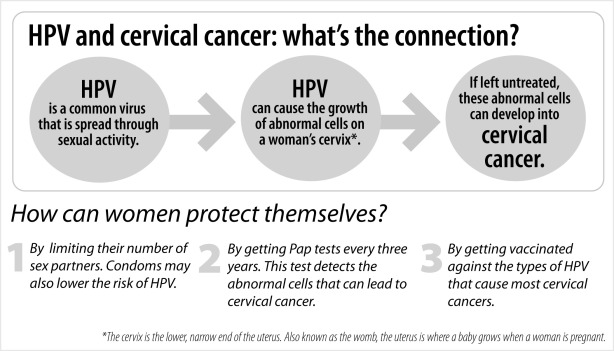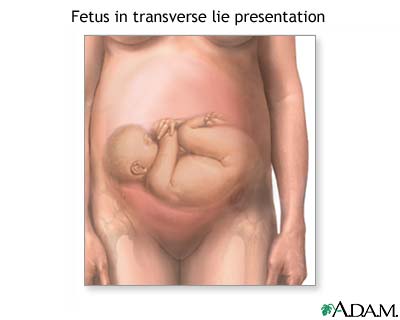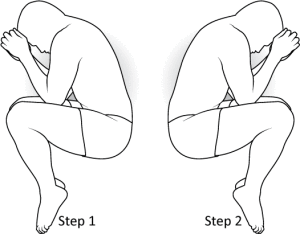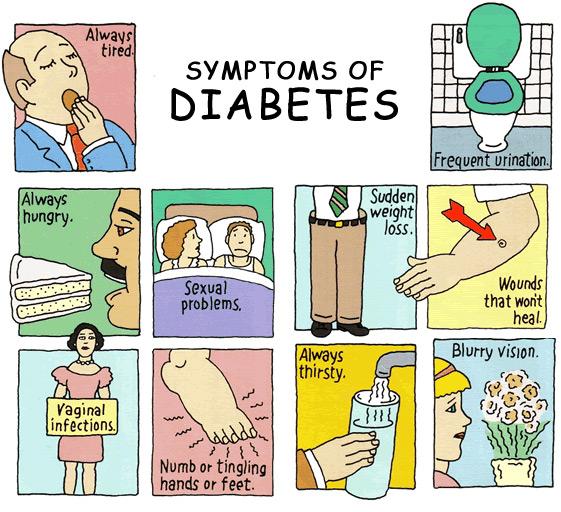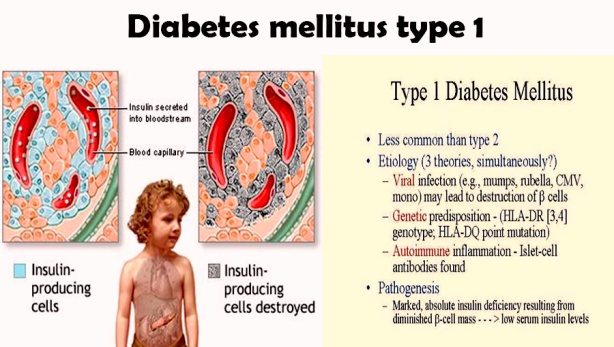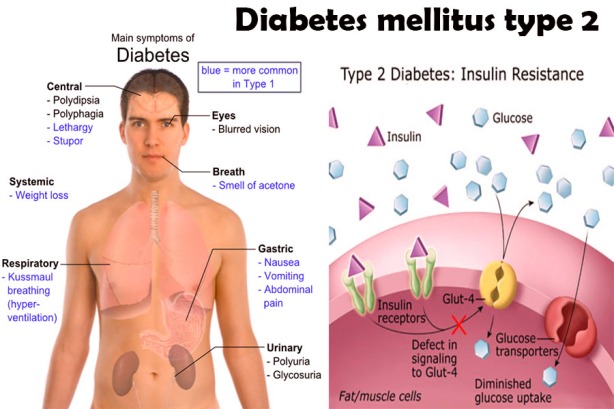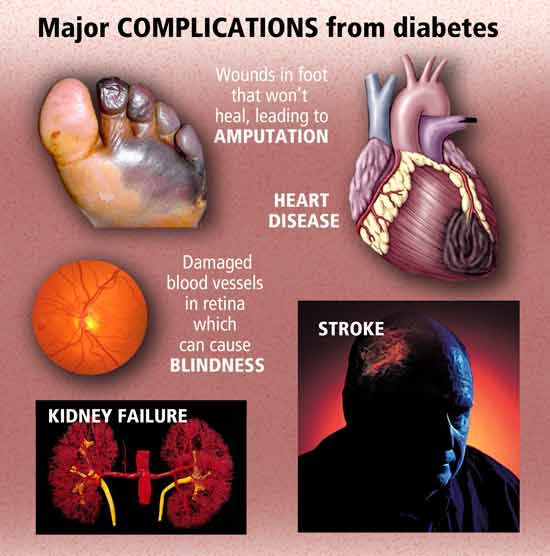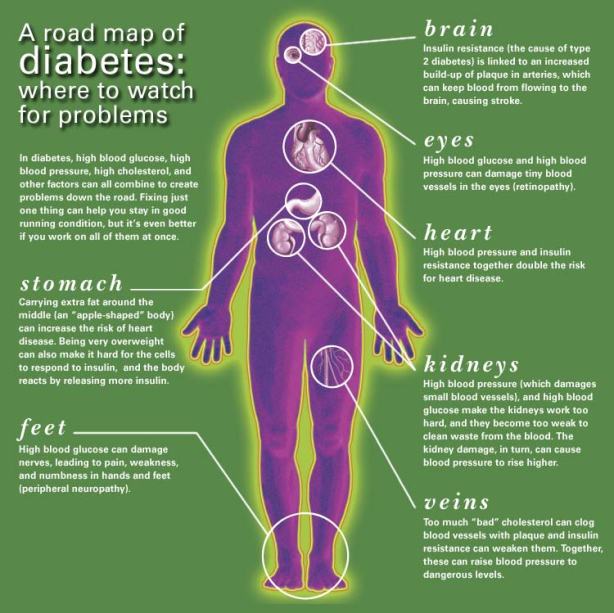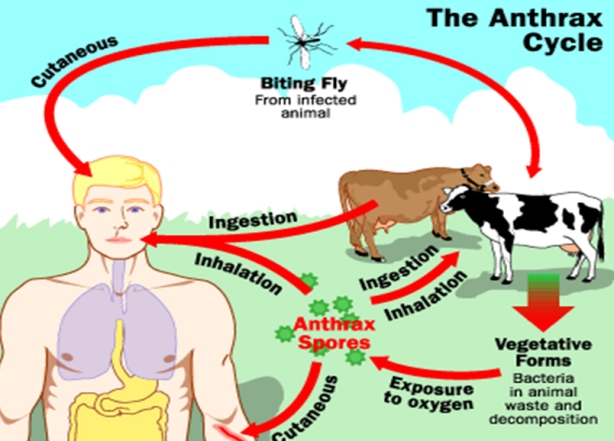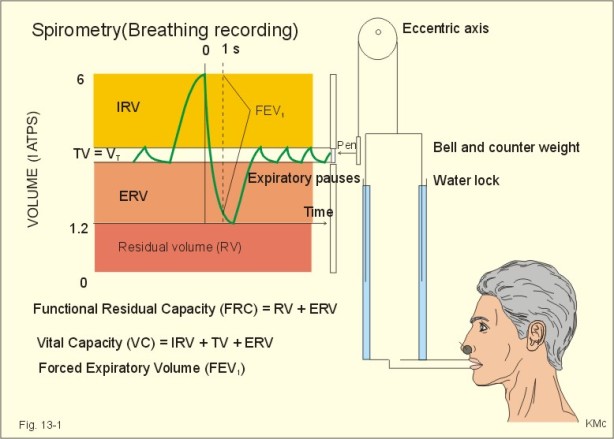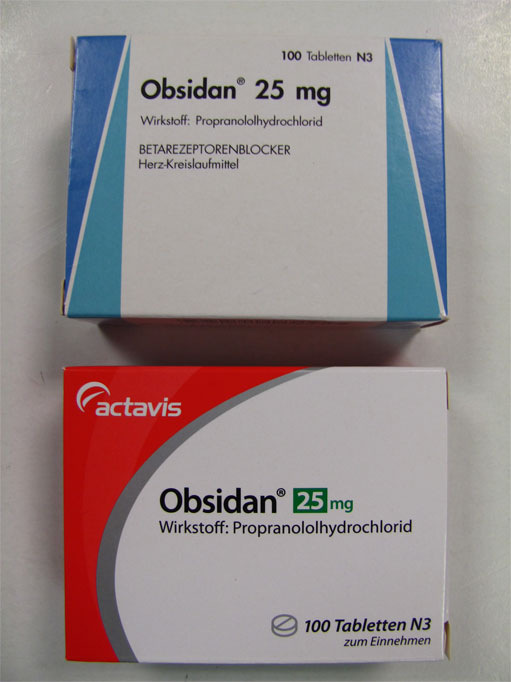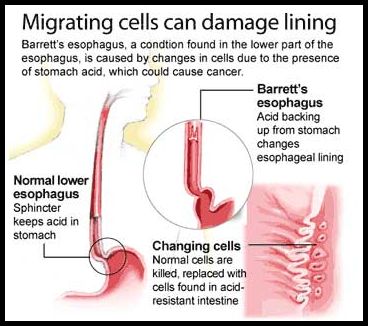Krok 2. Medicine-2011
1 A children’s health camp received a party of tinned food. External examination of the tins revealed that they had deep dents, could be easily concaved when pressed and wouldn’t immediately return to the initial state; rust was absent; the tins were greased with inedible fat. Specify the bloat type:
A. Physical*
B. Physicochemical
C. Combined
D. Biological
E. Chemical
2 During a surgery on a 30-year-old patient a dark ileo-ileal conglomerate was discovered, the intussusceptum intestine was considered to be unviable. The intussuscipiens intestine was dilated to 7-8 cm, swollen, full of intestinal contents and gases. What pathology led to the surgery?
A. Strangulation obstruction
B. Obturation obstruction
C. Paralytic obstruction
D. Spastic obstruction
E. Invagination (combined) obstruction*
3 A primigravida is 22 years ol d. She has Rh(-), her husband has Rh(+). Antibodies to Rh weren’t found at 32 weeks of pregnancy. Redetermination of antibodies to Rh didn’t reveal them at 35 weeks of pregnancy as well. How often should the antibodies be determined hereafter?
A. Montly
B. Once in three weeks
C. Once in two weeks
D. There is no need in further checks
E. Once a week*
4 A 7-year-old boy has been managed for a month. Immediately after hospitalization there were apparent edemata, proteinuria – 7,1 g/l, daily urine protein – 4,2 g. Biochemical blood test shows persistent hypoproteinemia (43,2 g/l), hypercholesterolemia (9,2 millimole/l). The patient is most likely have the following type of glomerulonephritis:
A. Hematuric
B. Nephritic
C. Nephrotic*
D. Combined
E. Isolated urinary

5 On the 2nd day after a surgery for toxic mixed goiter IV a 35-year-old patient complains of heart pain. ECG shows prolonged QT intervals. Chvostek’s and Trousseau symptoms cannot be clearly defined. The patient is provisionally diagnosed with latent tetany. What study will allow to confirm the diagnosis?
A. Determination of thyroid hormones
B. Determination of sodium
C. Determination of thyrotropic hormone
D. Determination of potassim
E. Determination of blood calcium and phosphor*

Trousseau Sign
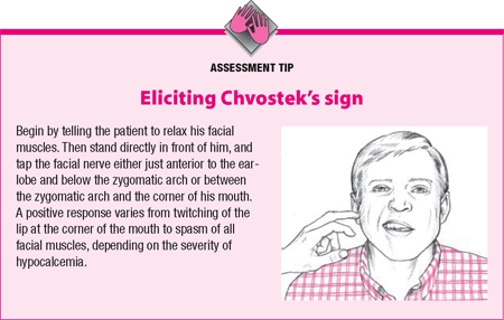
chvostek’s sign
6 In autumn a 25-year-old patient developed stomach ache arising 1,5-2 hours after having meals and at night. He complains of pyrosis and constipation. The pain is getting worse after consuming spicy, salty and sour food, it can be relieved by means of soda and hot-water bag. The patient has been suffering from this disease for a year. Objectively: furred moist tongue. Abdomen palpation reveals epigastrial pain on the right, resistance of abdominal muscles in the same region. What is the most likely diagnosis?
A. Duodenal ulcer*
B. Diaphragmatic hernia
C. Stomach ulcer
D. Chronic cholecystitis
E. Chronic pancreatitis
-
- NB! Difference Between a Duodenal Ulcer and Gastric Ulcer
- Both types of ulcer cause pain, particularly gastric pain, climbing up to the esophagus. However, with a gastric ulcer, pain cannot be relieved by eating foods. In a duodenal ulcer, it can be relieved by eating. In a duodenal ulcer, there is bleeding in the stool called melena. In gastric ulcers, there is blood when the patient vomits called hematemesis. In gastric ulcers, pain occurs 1-2 hours after eating. In duodenal ulcers, pain occurs 3-4 hours after eating. 7 A 42-year-old female patient suffers from micronodular cryptogenic cirrhosis. Over the last week her condition has deteriorated: there appeared convulsions, mental confusion, increased jaundice. What study may explain such aggravation?
A. Determination of cholesterol ethers
B. Determination of serum ammonia*
C. Determination of alkaline phosphatase rate
D. Determination of ALAT and ASAT
E. Determination of alpha-phetoprotein rate
NB! Cryptogenic cirrhosis (Idiopathic Cirrhosis) is a type of liver disease for which there is no easily identifiable cause.It’s possible that another type of liver disease known as nonalcoholic steatohepatitis (NASH), which is a buildup of fat in the liver, may lead to cryptogenic cirrhosis.
Most ammonia in the body forms when protein is broken down by bacteria in the intestines. Ammonia levels in the blood rise when the liver is not able to convert ammonia to urea. This may be caused by cirrhosis or severe hepatitis.
8 A parturient woman is 23 years old. Vaginal obstetric examination reveals full cervical dilatation. There is no fetal bladder. Fetal head is in the plane of pelvic outlet. Sagittal suture is in mesatipellic pelvis, anterior fontanel is closer to pubes. The fetal head diameter in such presentation will be:
A. Suboccipito-bregmaticus*
B. Suboccipitio-frontalis
C. Biparietal
D. Fronto-occipitalis recta
E. Mento-occipitalis

9 A 49-year-old patient complains of dyspnea, cough. There are no sputum discharges. He has repeatedly used salbutamol and intal but with no effect. Objectively: he is only able to sit while leaning on the table. Cyanosis of face, acrocyanosis are present. Breathing is shallow, laboured, in some parts it cannot be auscultated; there are diffuse rales, expiration is significantly prolonged. Heart sounds are muffled, tachycardia is present. Ps – 112/min., AP – 110/70 mm Hg. Liver is located near the costal arch. There are no peripheral edemat a. What is your provisional diagnosis?
A. Status asthmaticus*
B. Cardiac asthma
C. Chronic obstructive bronchitis
D. Bronchiale asthma, moderate gravity
E. Foreign object aspiration
NB! Acute severe asthma = status asthmaticus = Severe Asthma attacks. Cardiac asthma is a medical diagnosis of wheezing, coughing or shortness of breath due to congestive heart failure. It is known as cardiac asthma because the symptoms mimic ordinary asthma.
10 A patient who had eaten mushrooms in the morning was delivered to the infectious diseases hospital at night. The disease development was rapi d. The patient presented with stomach pain, frequent diarrhea, intractable vomiting, burning thirst, headache and dizziness. He died on the third day. What mushrooms are most likely to have caused mycetismus?
A. Russules
B. Morels
C. Deadly amanita*
D. Fly agarics
E. Sulfur-tufts

Deadly amanita
11 The institutions which take part in carrying out medical examinations can be prevention and treatment facilities, medical board of Ministry of Defense, medical board of Ministry of Home Affairs, medico-social expert commissions, forensic medical boards etc. What institutions are responsible for temporary disability examination?
A. Medical boards of Ministry of Defense
B. Prevention and treatment facilities*
C. Medical boards of Ministry of Home Affairs
D. Medico-social expert commissions
E. Sanitary-and-prophylactic institutions
12 A 26-year-old patient with left lower lobe pneumonia experiences an acute chest pain on the left during coughing. Objectively: diffuse cyanosis, widening of the left half of chest. Percussion reveals high tympanitis. Auscultation reveals no respiratory murmurs above the left half of chest. There is a deviation of the right cardiac border towards the midclavicular lin e. What examination will be the most informative?
A. X-Ray*
B. Spirography
C. Bronchography
D. Pneumotachometry
E. Bronchoscopy
13 A 54-year-old female patient consulted a gynaecologist about bloody discharges from the vagina for 1 month. Last menstruation was 5 years ago. Gynaecological examination revealed no pathological changes. What is the tactics of choice?
A. Cytosmear
B. Colposcopy
C. Symptomatic therapy
D. Diagnostic fractional curettage of uterine cavity*
E. USI

14 A child was born at a gestational age of 34 weeks in grave condition. The leading symptoms were respiratory distress symptoms, namely sonorous and prolonged expiration, involving additional muscles into respiratory process. The Silverman score at birth was 0 points, in 3 hours it was 3 points with clinical findings. Which diagnostic study will allow to diagnose the form of pneumopathy?
A. Immunoassay
B. Proteinogram
C. X-ray of chest *
D. Determination of blood gas composition
E. Clinical blood test

Silverman Score (Silverman-Anderson Index)

Silverman Scoring for Respiratory Distress
15 It is required to analyze the level of daylight illumination in a ward of therapeutics unit. What device should be applied to estimate the level of daylight illumination?
A. Anemometer
B. Illuminometer*
C. Actinometer
D. Psychrometer
E. Katathermometer

Digital Illuminometer
16 A 38-year-old male patient has been taking alcohol for 3 years. 3 days after a regular drinking period he felt anxiety and fear. It appeared to him that he was surrounded by spiders and worms, pursued by some “condemnatory voices”. His behaviour became aggressiv e. The patient demonstrated correct self-awareness but impairment of temporal and spatial orientation. What is the most likely diagnosis?
A. Delirium alcoholicum*
B. Pathologic intoxication
C. Alcoholic encephalopathy
D. Alcoholic hallucinosis
E. Alcoholic paranoia
17 A pregnant woman was delivered to the gynecological unit with complaints of pain in the lower abdomen and insignificant bloody discharges from the genital tracts for 3 hours. Last menstruation was 3 months ago. Vaginal examination showed that body of womb was in the 10th week of gestation, a fingertip could be inserted into the external orifice of uterus, bloody discharges were insignificant. USI showed small vesicles in the uterine cavity. What is the most likely diagnosis?
A. Threat of spontaneous abortion
B. Grape mole*
C. Abortion in progress
D. Incipient abortion
E. Incomplete abortion

18 A 58-year-old patient complains about sensation of numbness, sudden paleness of II-IV fingers, muscle rigidness, intermittent pulse. The patient presents also with polyarthralgia, dysphagia, constipations. The patient’s face is masklike, solid edema of hands is present. The heart is enlarged; auscultation revealed dry rales in lungs. In blood: ESR – 20 mm/h, crude protein – 85/l, g-globulines – 25%. What is the most likely diagnosis?
A. Systemic lupus erythematosus
B. Dermatomyositis
C. Raynaud’s disease
D. Systemic scleroderma*
E. Rheumatoid arthritis

Systemic Sclerosis (scleroderma)

systemic scleroderma – Musk Face
19 A 40-year-old patient, the forester, complains of severe headache, body temperature rise up to 39,5oC, trembling limbs. From the patient’s history we know that he had seriously cut his hand during the dissection of a killed fox. Objectively: depressed mood. The patient asks not to turn on the light or open the door. Any noise causes apparent motor excitation. When he saw a carafe of water, he developed convulsive throat spasms. What tactics should an emergency doctor choose?
A. Deliver the patient to the infectious disease hospital*
B. Deliver the patient to the neurological department
C. Let him stay at home and consult a psychiatrist
D. Deliver the patient to the psychiatric hospital
E. Deliver the patient to the resuscitation department
20 While asessing the health status of graduates of a secondary school, the doctor found one of them to have grade 3 tonsillar hypertrophy, chronic rhinitis and vegetative-vascular dystonia. The organism functionality is reduced. This student belongs to the following health group:
A. II
B. V
C. I
D. IV
E. III*
21 A 32-year-old patient consulted a doctor about being inable to get pregnant for 5-6 years. 5 ago the primipregnancy ended in artificial abortion. After the vaginal examination and USI the patient was diagnosed with endometrioid cyst of the right ovary. What is the optimal treatment method?
A. Hormonal therapy with androgenic hormones
B. Anti-inflammatory therapy
C. Conservative therapy with estrogen-gestagenic drugs
D. Sanatorium-and-spa treatment
E. Surgical laparoscopy*

Surgical laparoscopy
22 A patient is being prepared for the operation on account of varix dilatation of lower extremities veins. Examination of the patient’s soles revealed flour-like desquamation along the skin folds. All the toenails are greyish-yellow, thickened and partially decayed. What dermatosis should be suspected?
A. Microsporia
B. Candidosis
C. Pityriasis versicolor
D. Microbial eczema
E. Rubromycosis*

Rubromycosis
23 A 3-year-old child has been taken to a pediatrician. He has no recent history of any diseases. Objective examination revealed no pathology of the internal organs. The child needs the routine immunization against the following disease:
A. Type B hepatitis
B. Measles, rubella, parotitis
C. Diphtheria and tetanus
D. Poliomyelitis*
E. Pertussis

24 While staying in a stuffy room a 19-year-old emotionally labile girl developed severe weakness, dizziness, blackout, nausea and loss of consciousness without convulsions. Objectively: the patient is unconscious, the skin is pale, extremities are col d. AP – 90/60 mm Hg, Ps- 96/min, deficient, breathing is shallow. Pupillary and tendon reflexes are present. There are no pathological signs. What is the most likely diagnosis?
A. Syncope *
B. Epileptic attack
C. Transient ischemic attack
D. Hysterical neurosis
E. Vegetovascular paroxysm
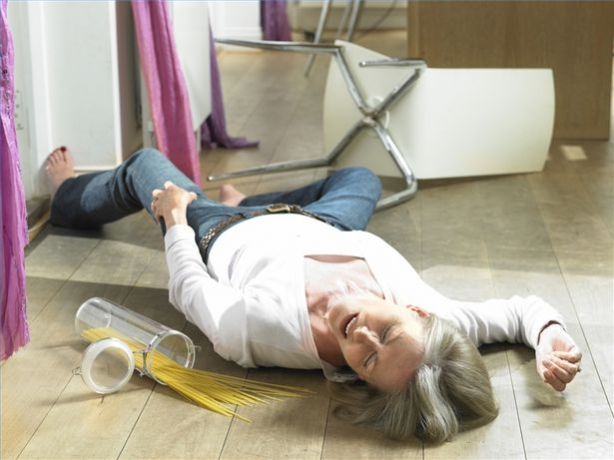
Syncope
25 A factory worker has ARD complicated by acute bronchitis. He receives treatment in the outpatient setting. The attending doctor has issued him a medical certificate for 5 days and then extended its duration by 5 more days. Patient can’t get down to work because of his health status. Who should extend the duration of medical certificate for this patient?
A. Deputy medical superintendent in charge of temporary disability examination
B. Medical advisory commission
C. Medical superintendent
D. A department chief *
E. Deputy medical superintendent in charge of medical treatment
26 Head circumference of a 1-month-old boy with signs of excitement is 37 cm, prefontanel is 2×2 cm large. After feeding the child regurgitates small portions of milk; stool is normal in respect of its volume and composition. Muscle tonus is within norm. What is the most likely diagnosis?
A. Meningitis
B. Pylorospasm *
C. Pylorostenosis
D. Craniostenosis
E. Microcephaly

Congenital pyloric stenosis. The abnormal narrowing of the opening of the pylorus causes episodes of projectile vomiting.
27 A 32-year-old male patient has been suffering from pain in the sacrum and coxofemoral joints, painfulness and stiffness in the lumbar spine for a year. ESR – 56 mm/h. Roentgenography revealed symptoms of bilateral sacroileitis. The patient is the carrier of HLA B27 antigen. What is the most likely diagnosis?
A. Ankylosing spondylitis*
B. Rheumatoid arthritis
C. Reiter’s disease
D. Coxarthrosis
E. Spondylosis

NB! Human Leukocyte Antigen (HLA) B27 (subtypes B*2701-2759) is a class I surface antigen encoded by the B locus in the major histocompatibility complex (MHC) on chromosome 6 and presents antigenic peptides (derived from self and non-self antigens) to T cells. HLA-B27 is strongly associated with ankylosing spondylitis (AS), and other associated inflammatory diseases referred to “spondyloarthropathies”.
28 A 14-year-old girl has been presenting with irritability and tearfulness for about a year. A year ago she was also found to have diffuse enlargement of the thyroid gland (II grade). This condition was regarded as a pubertal manifestation, the girl didn’t undergo any treatment. The girl’s irritability gradually gave place to a complete apathy. The girl got puffy face, soft tissues pastosity, bradycardia, constipations. Skin pallor and gland density progressed, the skin became of a waxen hue. What disease may be suspected?
A. Autoimmune thyroiditis*
B. Thyroid carcinoma
C. Subacute thyroiditis
D. Diffuse toxic goiter
E. Juvenile basophilism

Autoimmune thyroiditis
29 A 38-year-old patient complains of inertness, subfebrile temperature, enlargement of lymph nodes, nasal haemorrhages, bone pain. Objectively: the patient’s skin and mucous membranes are pale, palpation revealed enlarged painless lymph nodes; sternalgia; liver was enlarged by 2 cm, spleen – by 5 cm, painless. In blood: erythrocytes – 2,7*1012/l, Hb- 84 g/l, leukocytes – 58*109/l, eosinophils – 1%, stab neutrophils – 2%, segmented neutrophils – 12%, lymphocytes – 83%, lymphoblasts – 2%, smudge cells; ESR- 57 mm/h. What is the most likely diagnosis?
A. Lymphogranulomatosis
B. Chronic myeloleukemia
C. Acute myeloleukemia
D. Acute lymphatic leukemia
E. Chronic lymphatic leukemia*
NB! Chronic lymphocytic leukemia is cancer of a type of white blood cells called lymphocytes. Chronic lymphocytic leukemia (also called CLL) is a blood and bone marrow disease that usually gets worse slowly. CLL is the second most common type of leukemia in adults. It often occurs during or after middle age.

30 On the 5th day after a surgery for colon injury a patient complains of bursting pain in the postoperative wound, weakness, drowsiness, headache, fever up to 40oC. Objectively: the skin around the wound is swollen, there is gas crepitation. The wound discharges are scarce foul-smelling, of dark-gray colorl. What is the most likely diagnosis?
A. Postoperative wound infection
B. Abscess
C. Anaerobic clostridial wound infection*
D. Erysipelas
E. Phlegmon

Alternate Names : Tissue infection – Clostridial, Gangrene – gas, Myonecrosis, Clostridial infection of tissues
31 A patient is 50 years old, works as a builder with 20 years of service recor d. He was admitted to the hospital for chest pain, dry cough, minor dyspnea. Objectively: sallow skin, acrocyanosis, asbestos warts on the hands. In lungs – rough respiration, diffuse dry rales. The x-ray picture shows intensification of pulmonary pattern, signs of pulmonary emphysema. What is the most likely diagnosis?
A. Lung cancer
B. Chronic obstructive bronchitis
C. Tuberculosis
D. Asbestosis*
E. Pneumonia

32 A 68-year-old patient consulted a doctor about a tumour in her left breast. Objectively: in the upper internal quadrant of the left breast there is a neoplasm up to 2,5 cm in diameter, dense, uneven, painless on palpation. Regional lymph nodes are not enlarged. What is the most likely diagnosis?
A. Cyst
B. Mastopathy
C. Lipoma
D. Fibroadenoma
E. Cancer*

33 A 50-year-old male suburbanite underwent treatment in rural outpatient clinic for pneumonia. The treatment didn’t have effect and the disease got complicated by exudative pleuritis. What prevention and treatment facility should the patient be referred to for further aid?
A. Phthisio-pulmonological dispensary
B. Tuberculosis dispensary
C. Central district hospital*
D. Municipal hospital
E. Regional hospital
34 A woman consulted a doctor on the 14th day after labour about sudden pain, hyperemy and induration of the left mammary gland, body temperature rise up to 39oC, headache, indisposition. Objectively: fissure of nipple, enlargement of the left mammary gland, pain on palpation. What pathology would you think about in this case?
A. Lactational mastitis*
B. Fibrous adenoma of the left mammary gland
C. Phlegmon of mammary gland
D. Lacteal cyst with suppuration
E. Breast cancer

35 A 45-year-old man has been exhibiting high activity for the last 2 weeks, he is talkative, euphoric, has little sleep, claims being able “to save the humanity and solve the problem of cancer and AIDS”, gives money to starangers. What is the most likely diagnosis?
A. Agitated depression
B. Schizo-affective disorder
C. Panic disorder
D. Catatonic excitation
E. Maniacal onset* (insane)

Maniacal onset (insane)
36 A 43-year-old female patient complains of unstable defecation with frequent constipations, abdominal swelling, headache, sleep disturbance. Body weight is unchanged. What disease are these clinical presentations typical for?
A. Chronic pancreatitis
B. Chronic atrophic gastritis
C. Colorectal cancer
D. Irritable colon syndrome*
E. Chronic enteritis

Symptoms and signs of Irritable Bowel Syndrome.

37 An 8-year-old boy suffering from haemophilia was undergoing transfusion of packed red cells. Suddenly he felt pain behind the breastbone and in the lumbar area, dyspnea, cold sweat. Objectively: pale skin, heart rate – 100/min, AP – 60/40 mm Hg; oliguria, brown urine. For the treatment of this complication the following drug should be administered:
A. Aminophylline
B. Analgine
C. Prednisolone*
D. Lasix
E. Adrenaline

38 A 45-year-old patient, a sailor, was hospitalized on the 2nd day of the disease. A week ago he returned from India. Complains of body temperature of 41oC, severe headache, dyspnea, cough with frothy rusty sputum. Objectively: the patient is pale, mucous membranes are cyanotic, breathing rate – 24/min, tachycardia is present. In lungs: diminished breath sounds, moist rales over both lungs, crepitation. What is the most likely diagnosis?
A. Pneumonic plaque*
B. Sepsis
C. Influenza
D. Ornithosis
E. Miliary tuberculosis

39 A 47-year-old patient complains of insomnia, heaviness over his entire body, constantly depressed mood. He considers himself good-for-nothing, inadequate. Believes that he is a burden to his family, wants to die. The patient is depressed, inactive, has a hypomimic face with sorrowful expression. He speaks quietly and monotonely,gives short answers. What is the most likely diagnosis?
A. Initial stage of Alzheimer’s disease
B. Atherosclerotic depression
C. Major depressive disorder*
D. Late-onset schizophrenia
E. Neurotic depression
40 A 30-year-old patient complains of paroxysmal abdominal pain, frequent liquid stools up to 10 times a day. Throughout the first 3 days he had a fever, since the 2nd day of disease there were scant liquid stools mixed with mucus. On palpation: tenderness of all colon segments. Sigmoid colon was found spastic. What is your provisional diagnosis?
A. Balantidiasis
B. Acute dysentery*
C. Salmonellosis
D. Intestinal amebiasis
E. Cholera
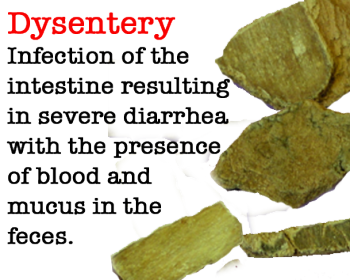
41 A 32-year-old gravida complains of episodes of unconsciousness, spontaneous syncopes that are quickly over after a change of body position. A syncope can be accompanied by quickly elapsing bradycardia. There are no other complications of gestation. What is the most likely reason for such condition?
A. Postcava compresseion by the gravid uterus*
B. Pressure fall in the veins of extremities
C. Psychosomatic disorders
D. Vegetative-vascular dystonia (cardiac type)
E. Pressure rise in the veins of extremities

Gravid uterus
42 A 58-year-old female patient came to the antenatal clinic with complaints of bloody light-red discharges from the genital tracts. Menopause is 12 years. Gynaecological examination found externalia and vagina to have age involution; uterine cervix was unchanged, there were scant bloody discharges from uterine cervix, uterus was of normal size; uterine appendages were not palpable; parametria were free. What is the most likely diagnosis?
A. Granulosa cell tumor of ovary
B. Cervical carcinoma
C. Abnormalities of menstrual cycle with climacteric character
D. Uterine carcinoma*
E. Atrophic colpitis

Uterine cancer (endometrial cancer)
43 A 43-year-old female patient was delivered to the hospital in grave condition. She has a history of Addison’s disease. The patient had been regularly taking prednisolone but a week before she stopped taking this drug. Objectively: sopor, skin and visible mucous membranes are pigmented, skin and muscle turgor is decreased. Heart sounds are muffled, rapi d. AP- 60/40 mm Hg, heart rate – 96/min. In blood: Na – 120 millimole/l, K – 5,8 millimole/l. Development of this complication is primarily caused by the deficit of the following hormone:
A. Adrostendion
B. Corticotropin (ACTH)
C. Adrenaline
D. Noradrenaline
E. Cortisol*

Addison’s disease
44 3 hours ago a 65-year-old female patient felt sharp abdominal pain irradiating to the right scapula, there was a single vomiting. She has a history of rheumatoid arthritis. Objectively: pale skin, AP- 100/60 mm Hg, Ps- 60/min. Abdomen is significantly painful and tense in the epigastrium and right subcostal areat, there are positive symptoms of parietal peritoneum irritation over the right costal arch, that is tympanitis. What is the tactics of an emergency doctor?
A. To take the patient to the rheumatological department
B. To inject pain-killers and watch the dynamics
C. To perform gastric lavage
D. To inject spasmolytics
E. To take the patient to the surgical hospital*
45 While lifting a heavy load a 39-year-old patient suddenly felt a severe headache, pain in the interscapular region,and started vomiting. Objectively: the pulse is rhythmic, 60/min., AP – 180/100 mm Hg. The patient is agitated. He presents with photophobia, hyperacusis. There are positive Kernig’s and Brudzinski’s signs on both sides. In blood: WBCs – 10*109/l. CSF is bloody, cytosis is 240/3. What is the most likely diagnosis?
A. Sympathoadrenal crisis
B. Subarachnoid haemorrhage *
C. Ischemic stroke
D. Acute hypertonic encephalopathy
E. Meningococcal meningitis

Subarachnoid haemorrhage

Rupture of a berry aneurysm at the bifurcation of large arteries at the base of the brain leads to escape of blood under pressure into the subarachnoid space, effectively coating the brain surface with clotted blood. Cerebral blood flow and brain glucose are reduced. Small ischemic lesions produced by microemboli set off recurring waves of CSDs, which, due to dysfunction of neurovascular coupling, are associated with paradoxical vasoconstriction and tissue hypoxia. These ischemic CSDs, which impose additional metabolic stress on the energy-depleted brain, worsen oxygen and glucose deficits, promoting the expansion of the lesions.
46 Examination of a 13-year-old boy reveals that his body length is 147 сm (+2), body weight – 38 kg (+1,5), circumference of chest – 72 cm (+0,2). Estimate the harmonicity of the child’s physical development:
A. Above the average
B. Sharply disharmonious
C. Disharmonious*
D. Harmonious
E. Supernormal
47 An ambulance delivered a 21-year-old woman to the gynaecological department with complaints of colicky abdominal pain and bloody discharges from the genital tracts. Bimanual examination revealed that uterus was soft, enlarged to the size of 6 weeks of gestation, a gestational sac was palpated in the cervical canal. Uterine appendages weren’t palpable. Fornices are free, deep and painless. Discharges from the genital tracts are bloody and profuse. What is the most likely diagnosis?
A. Incipient abortion
B. Cervical pregnancy
C. Interrupted fallopian pregnancy
D. Threat of abortion
E. Abortion in progress*

48 HIV displays the highest tropism towards the following blood cells:
A. Erythrocytes
B. Thrombocytes
C. T-helpers*
D. T-killers
E. T-suppressors
49 A 20 year-old patient complains of nosebleeds, numbness of the lower extremities. Objectively: hyperaemia of face, on the upper extremities AP is160/90 mm Hg, and 80/50 mm Hg on the lower ones. Pulse on the popliteal and pedal arteries is of poor volume, there is systolic murmur over the carotid arteries. What is the most likely diagnosis?
A. Atrial septal defect
B. Ventricular septal defect
C. Aorta coarctation*
D. Aortopulmonary window
E. Dissecting aortic aneurysm

50 The Carpathian region is characterized by constant high humidity of atmospheric air (over 80%). Inhabitants of this region feel severe cold in corresponding season at a medium low temperatur e. It’s caused by heat emission by:
A. Vaporization
B. –
C. Convection*
D. Radiation
E. Conduction

Convection
51 A 53-year-old woman complained of cardiac pain and rhythm intermissions. She had experienced these presentations since childhood. The patient’s father had a history of cardiac arrhythmias. Objectively: the patient was in grave condition, Ps – 220 bpm, AP – 80/60 mm Hg. ECG: heart rate – 215/min, widening and deformation of QRS complex accompanied by atrioventricular dissociation; positive P wave. Some time later heart rate reduced down to 45/min, there was a complete dissociation of P wave and QRST complex. Which of the following will be the most effective treatment?
A. Cardiac glycosides
B. Calcium antagonists
C. Cholinolytics
D. b-adrenoreceptor blocking agents
E. Implantation of the artificial pacemaker*



A 77-year-old man with permanent artificial pacemaker. This is his EKG.
52 The correlation between the service record and eosinophil concentration in blood has been studied in female workers of dyeing shops of textile factories. What index will be the most informative for the analysis of this data?
A. Correlation factor *
B. Standardized index
C. Fitting criterion
D. Sign index
E. Student’s criterion
53 The patient complains of a painful swelling in the chin region, malaise, headache. Examination reveals an acutely inflamed cone-shaped dense node. The skin over it is tense, red. In the center of the node there is an ulcer with overhanging edges and a necrotic core of a dirty-green colour. Submandibular lymph nodes on the right are enlarged and painful. What is the most likely diagnosis?
A. Parasitic sycosis
B. Tertiary syphilis (gummatous form)
C. Furuncle*
D. Tuberculosis
E. Carbuncle

Furuncle on the neck


Carbuncle on the neck
54 A 58-year-old patient has a 3-year history diabetes mellitus type II. He has been keeping to a diet and regularly taking glyburide. He has been delivered to a hospital on an emergency basis for acute abdomen. Objectively: the patient is of supernutrition type. The skin is dry. In the lungs vesicular breathing can be auscultated. Heart sounds are regular, 90/min. AP- 130/70 mm Hg. The symptom of “wooden belly” is visible. Blood sugar – 9,8 millimole/l. The patients has indication for laparotomy. What is the most appropriate way of further treatment of diabetes?
A. To administer Semilong to be taken in the morning and insulin – in the evening
B. To administer 1 tablet of Glurenorm three times a day
C. To continue taking glyburide
D. To administer short insulin*
E. To administer 1 tablet of Maninil three times a day
55 A 16-year-old patient who has a history of intense bleedings from minor cuts and sores needs to have the roots of teeth extracted. Examination reveals an increase in volume of the right knee joint, limitation of its mobility. There are no other changes. Blood analysis shows an inclination to anaemia (Hb- 120 g/l). Before the dental intervention it is required to prevent the bleeding by means of:
A. Dried blood plasma
B. Fibrinogen
C. Calcium chloride
D. Cryoprecipitate* (Frozen Blood)
E. Epsilon-aminocapronic acid

56 A 30-year-old patient was hospitalized with a diagnosis: intestinal obstruction. During the surgery it was revealed that the obstruction of the small intestine had been caused by a mass of helminths. What helminths are these?
A. Pinworms
B. Ascarids*
C. Filarial worms
D. Cysticerci
E. Guinea worms

57 A 23-year-old patient complains of a dull ache, sensation of heaviness and distention in the epigastrium immediately after meals, foul-smelling eructation; dry mouth, empty stomach nausea, diarrhea. Objectively: the skin is pale, the patient is of thin build. Abdomen is soft on palpation, there is epigastric pain. The liver does not extend beyond the costal arch. In blood: Hb – 110 g/l, RBCs – 3,4*1012/l, WBC count is normal. ESR – 16 mm/h. What is the most informative study that will allow make a diagnosis?
A. Duodenal probing
B. X-ray of digestion organs
C. Study of gastric juice
D. pH-metry
E. Esophageal gastroduodenoscopy*

58 A 22-year-old vegetarian patient with signs of malnutrition consulted a doctor about smell and taste distortion, angular stomatitis. Objectively: marked blue sclerae. The patient was diagnosed with iron deficiency anemia. What is the dominating clinical syndrome?
A. Haemolytic
B. Anaemic
C. Myelodysplastic
D. Sideropenic* ( iron deficiency in the blood serum)
E. Haemologic
59 On the 5th day of a respiratory disease accompanied by fever a 24-year-old man developed progressing headaches, systemic dizziness, double vision, facial muscles paresis on the right, choking from swallowing. He was diagnosed with acute viral encephalitis. Identify the main tendency of the emergency treatment:
A. Ceftriaxone
B. Zovirax*
C. Haemodezum
D. Lasix
E. Glucocorticoids

60 A 60-year-old patient has been admitted to a hospital with complaints of dyspnea, tightness in the right subcostal area, abdomen enlargement. These presentations have been progressing for a year. Heart auscultation reveals presystolic gallop rhythm. Objectively: swelling of the neck veins, ascites, palpable liver and spleen. What disease requires differential diagnostics?
A. Hepatocirrhosis
B. Pulmonary embolism
C. Chronic pulmonary heart
D. Lung cancer with invasion to the pleura
E. Constrictive pericarditis*


Present when a fibrotic, thickened, and adherent pericardium restricts diastolic filling of the heart.This slowly progresses to a chronic stage consisting of fibrous scarring and thickening of the pericardium with obliteration of the pericardial space

Pericardial Calcifications (TB Patient)
61 A 43-year-old man who often contacts with ethyl gasoline was admitted to a hospital with complaints of general weakness, dizziness, memory impairment, sleepiness at daytime and insomnia at night, sensation of a hair in the mouth, colicky pains in the right subcostal region. What is the most likely diagnosis?
A. Chronic mercury intoxication
B. Chronic manganese intoxication
C. Chronic tetraethyl lead intoxication*
D. Alcoholic delirium
E. Chronic lead intoxication
NB! Tetraethyllead (common name tetraethyl lead), abbreviated TEL. It was mixed with gasoline (petrol) beginning in the 1920s as an inexpensive octane booster which allowed engine compression to be raised substantially, which in turn increased vehicle performance and fuel economy.
TEL was phased out starting in the US in the mid-1970s because of its neurotoxicity and its damaging effect on catalytic converters.

62 2 weeks after recovering from angina a 29-year-old patient noticed face edemata, weakness, decreased work performance. There was gradual progress of dyspnea, edemata of the lower extremities, lumbar spine. Objectively: pale skin, weakening of the heart sounds, anasarca. AP- 160/100 mm Hg. In urine: the relative density – 1021, protein – 5 g/l, erythrocytes – 20-30 in the field of vision, hyaline cylinders – 4-6 in the field of vision. What is the most likely diagnosis?
A. Essential hypertension
B. Acute pyelonephritis
C. Myxedema
D. Acute glomerulonephritis*
E. Infectious allergic myocarditis
63 A 22-year-old patient is a clerk. His working day runs in a conditioned room. In summer he was taken by an acute disease with the following symptoms: fever, dyspnea, dry cough, pleural pain, myalgia, arthralgia. Objectively: moist rales on the right, pleural friction rub. X-ray picture showed infiltration of the inferior lobe. In blood: WBC – 11*109/l, stab neutrophils – 6%, segmented neutrophils – 70%, lymphocytes – 8%, ESR – 42 mm/h. What is the ethiological factor of pneumonia?
A. Staphylococcus
B. Legionella*
C. Mycoplasm
D. Streptococcus
E. Pneumococcus
NB! Legionella is a pathogenic Gram negative bacterium, including species that cause legionellosis (Legionnaires’ disease), most notably L. pneumophila. Legionella is water-borne and lives withinamoebae in the natural environment.
The most common sources of Legionella and Legionnaires’ disease outbreaks are cooling towers (used in industrial cooling water systems), domestic hot water systems,and spas. Additional sources include large central air conditioning systems, fountains, domestic cold water, swimming pools (especially in Scandinavian countries and northern Ireland) and similar disseminators that draw upon a public water supply. Natural sources include freshwater ponds and creeks.

Legionella pneumophila
64 10 minutes after delivery a woman discharged placenta with a tissue defect 5х6 cm large. Discharges from the genital tracts were profuse and bloody. Uterus tonus was low, fundus of uterus was located below the navel. Examination of genital tracts revealed that the uterine cervix, vaginal walls, perineum were intact. There was uterine bleeding with following blood coagulation. Your actions to stop the bleeding:
A. To put an ice pack on the lower abdomen
B. To make manual examination of uterine cavity*
C. To administer uterotonics
D. To apply hemostatic forceps upon the uterine cervix
E. To introduce an ether-soaked tampon into the posterior fornix
65 A 38-year-old woman experiences episodic increases in arterial pressure up to 240/120 mm Hg, which is accompanied by nausea, vomiting, tachycardia, increased sweating, hyperglycemia. The attack is usually followed by the excessive urination. Renal sonography reveals an additional formation adjacent to the upper pole of the right kidney and possibly belonging to the adrenal gland. What laboratory test will allow to clarify the diagnosis?
A. Blood test for thyroxine and thyrotrophic hormone
B. Blood test for renin level
C. Estimation of glomerular filtration rate by measuring endogenous creatinine clearance
D. Blood test for insulin and C-peptide
E. Determination of urinary excretion of catecholamines and vanillylmandelic acid* (Vanillyl mandelic acid (VMA) is an end-stage metabolite of the catecholamines epinephrine and norepinephrine. )
66 A 24-year-old patient complains about putting on weight, limosis. Objectively: the patient’s constitution is of hypersthenic type, body weight index is 33,2 kg/m2, waist circumference is 100 cm. Correlation of waist circumference to the thigh circumference is 0,95. What is the most likely diagnosis?
A. Hypothalamic Itsenko-Cushing obesity of the I stage, abdominal type
B. Alimentary constitutional obesity of the II stage, abdominal type
C. Alimentary constitutional obesity of the I stage, abdominal type*
D. Alimentary constitutional obesity of the III stage, gynoid type
E. Hypothalamic Itsenko-Cushing obesity of the II stage, gynoid type

67 A 65-year-old patient complains of pain in the lumbar spine, moderate disuria. He has been suffering from these presentations for about half a year. Prostate volume is 45 cm3 (there are hypoechogenic nodes in both lobes, capsule invasion). The rate of prostate-specific antigen is 60 ng/l. Prostate biopsy revealed an adenocarcinoma. Which of the supplemental examination methods will allow to determine the stage of neoplastic process in this patient?
A. Bone scintigraphy
B. Computer tomography of pelvis*
C. Excretory urography
D. Roentgenography of chest
E. Roentgenography of lumbar spine

Computer tomography of pelvis
68 A 49-year-old male patient complains of dyspnea of combined nature, cough, shin edemata, abdomen enlargement due to ascites. He has a 20-year history of chronic bronchitis. For the last 3 years he has been disabled (group II) because of cardiac changes. Objectively: mixed cyanosis, edemata. Ps – 92/min, rhythmic, AP – 120/70 mm Hg, respiration rate – 24/min. There is accentuation of the second sound above the pulmonary artery. Auscultation reveals the box resonance above the lungs. There are also dry rales over the entire surface of lungs. What is the mechanism of heart changes development in this patient?
A. Kitaev’s reflex
B. Bainbridge reflex
C. Respiratory reflex
D. Euler-Liljestrand reflex*
E. Cardiovascular reflex
NB! The Euler–Liljestrand mechanism describes the connection between ventilation and blood circulation (perfusion) of the lung. If the ventilation in a part of the lung decreases it leads to local hypoxia. The local hypoxia leads to pulmonary vasoconstriction. This adaptive mechanism is beneficial, because it diminishes the amount of blood that passes the lung without being oxygenated.
69 A child is 7 months old. Birth weight was 3450, the child is breastfed. Supplemental feeding was introduced on time. Determine the daily protein requirements for the child:
A. 2,5 g/kg
B. 4,0 g/kg
C. 3,0 g/kg*
D. 2,0 g/kg
E. 3,5 g/kg
70 On the 21 day after appearance of vesiculous chickenpox rash a 7-year-old child developed ataxia, nystagmus, intention tremor, muscle hypotonia. Liquor analysis shows a low-grade lymphocytic pleocytosis, slightly increased protein rate. What complication is it?
A. Acute nephritis
B. Purulent meningitis
C. Pneumonitis
D. Encephalitis*
E. Postherpetic neuralgia
- Pleocytosis = It is often defined specifically as an increased WBC count in CSF.
- Increased white blood cell count in the blood is called Leukocytosis.
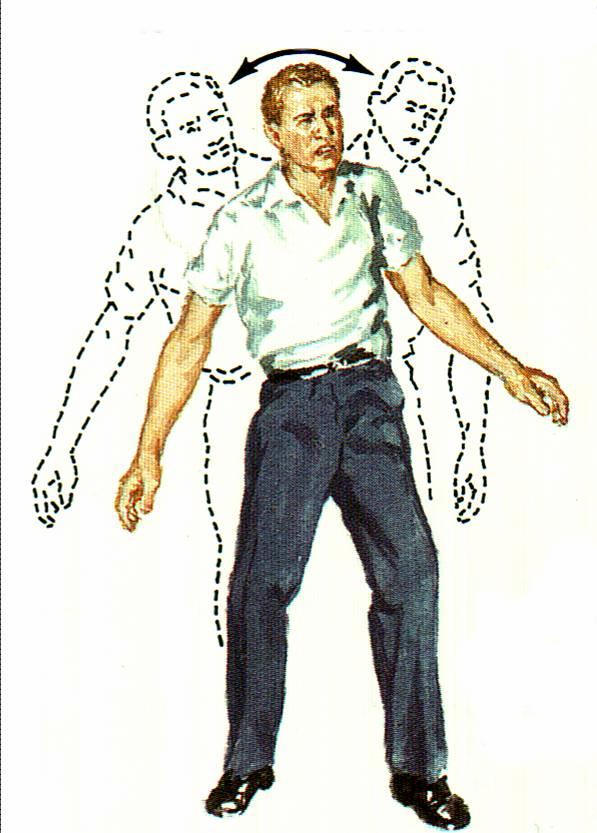
Cerebellar Ataxia

Nystagmus

Tremor

Hypotonia In Infants
71 A 60-year-old female patient was admitted to a hospital for acute transmural infarction. An hour later the patient’s contition got worse. She developed progressing dyspnea, dry cough. Respiratory rate – 30/min, heart rate – 130/min, AP- 90/60 mm Hg. Heart sounds were muffled, there was also diastolic shock on the pulmonary artery. The patient presented with medium moist rales in the lower parts of lungs on the right and on the left. Body temperature – 36,4oC. What drug should be given in the first place?
A. Heparin
B. Digoxin
C. Promedol *
D. Aminophylline
E. Dopamine


NB! Promedol, a medicinal preparation that belongs to the group of narcotic analgesics. It exerts a pain-relieving and spasmolytic effect on smooth musculature. Promedol is used in the same instances as preparations of the morphine group.
72 A 7-year-old child was brought to a doctor for a check. The child has a 4-year history of bronchial asthma, asthma attacks occur mainly in spring and summer. Allergy tests revealed hypersensitivity to poplar seed tufts, field herbs. What recommendation should be given?
A. Physiotherapy
B. Phytotherapy
C. Treatment at a health resort
D. Needle reflexotherapy
E. Specific hyposensitization*
73 4 hours after having meals a patient with signs of malnutrition and steatorrhea experiences stomach pain, especially above navel and to the left of it. Diarrheas take turns with constipation lasting up to 3-5 days. Palpation reveals moderate painfulness in the choledochopancreatic region. The amylase rate in blood is stable. X-ray reveals some calcifications located above navel. What is the most likely diagnosis?
A. Zollinger-Ellison syndrome
B. Chronic pancreatitis*
C. Chronic calculous cholecystitis
D. Chronic gastroduodenitis
E. Duodenal ulcer

Chronic pancreatitis

Chronic pancreatitis
74 On the 3rd day of life a baby presented with haemorrhagic rash, bloody vomit, black stool. Examination revealed anaemia, extended coagulation time, hypoprothrombinemia, normal thrombocyte rate. What is the optimal therapeutic tactics?
A. Fibrinogen
B. Vitamin K*
C. Sodium ethamsylate
D. Calcium gluconate
E. Epsilon-aminocapronic acid
75 A 58-year-old female patient complains about periodical headache, dizziness and ear noise. She has been suffering from diabetes mellitus for 15 years. Objectively: heart sounds are rhythmic, heart rate is 76/min, there is diastolic shock above aorta, AP is 180/110 mm Hg. In urine: OD- 1,014. Daily loss of protein with urine is 1,5 g. What drug should be chosen for treatment of arterial hypertension?
A. a-blocker
B. Calcium channel antagonist
C. Thiazide diuretic
D. Ihibitor of angiotensin converting enzyme*
E. b-blocker
76 After a serious nervous stress a 35-year-old patient has developed on the dorsal surface of hands redness and swelling that were later replaced by small inflammatory nodules, vesicles and following erosion with a significant serous discharge. The process is accompanied by severe itching. What is the most likely diagnosis?
A. Simple contact dermatitis
B. Toxicoderma
C. True eczema*
D. Microbal eczema
E. Allergic dermatitis

77 A 45-year-old patient complains of some painless nodular elements tending to peripheral growth and fusion. He has a 2-year history of this disease. Aggravation takes place mainly in spring. In anamnesis: the patient’s father had similar skin lesions. Objectively: pathological elements looke like guttate and nummular nodules, plaques covered with white scales. What is your provisional diagnosis?
A. Lichen ruber planus
B. Pityriasis rosea
C. Seborrheic eczema
D. Psoriasis*
E. Neurodermitis

Guttate Psoriasis
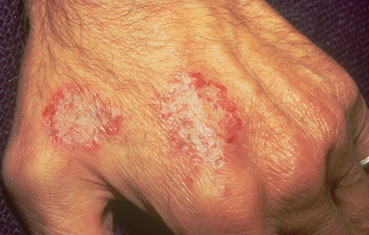
Nummular Psoriasis


78 A 30-year-old gravida consulted a gynecologist about bright red bloody discharges from the vagina in the 32 week of gestation. She was hospitalized with a suspicion of placental presentation. Under what conditions is it rational to conduct the internal examination in order to make a diagnosis?
A. In the delivery room keeping to all the aseptics regulations
B. In the admission ward of maternity hospital
C. In the operating room prepared for the operation*
D. In the examination room of antenatal clinic
E. The examination is not to be conducted because of risk of profuse haemorrhage

79 A schizophrenic patient considers himself to be “an outstanding scientist, a brilliant composer and an unrivalled artist”. He complains that “family and friends are always jealous of him and want to poison him“. Determine the psychopathological syndrome:
A. Manic
B. Paratrophic
C. Hebephrenic
D. Paranoid
E. Paranoiac*

Paranoia FAIL
80 A child is 9 months old. The patient’s body temperature is 36,7oC, the skin is pale, humid, there is pain in leg muscles. There is no extremities mobility, sensitivity is present. The child has been diagnosed with poliomyelitis. The causative agent of this disease relates to the following family:
A. Adenovirus
B. Picornavirus*
C. Rotavirus
D. Tohovirus
E. Paramyxovirus


81 A student analyzes noise level of cold-pressing process. What device should be applied for this hygienic study?
A. Sound tester
B. Pyranometer
C. Actinometer
D. Noise analyzer
E. Noise and vibration analyzer*

Noise and vibration analyzer
82 A 28-year-old patient complains of periodic compressing heart pain. His brother died at the age of 34 from a cardiac disease with similar symptoms. Objectively: the patients skin is pale. Heart borders display no significant deviations. Heart sounds are loud, there is a systolic murmur above all the points with a peak above the aorta. Echocardioscopy reveals thickening of the interventricular septum in the basal parts, reduction of left ventricular cavity. What drug should be administered in order to prevent the disease progression?
A. Metoprolol*
B. Furosemide
C. Captopril
D. Nitroglycerin
E. Digoxin

83 A 24-years-old patient has chronic glomerulonephritis.Urine test reveals the following: the relative density is 1010, protein – 1,65 g/l, RBCs – 5-7 in the field of vision, WBCs – 2-3 in the field of vision. Blood creatinine – 0,350 millimole/l. Serum sodium – 148 millimole/l. What is the main reason for hyperazotemia in this patient?
A. Reduction of renal blood flow
B. Increased proteinuria
C. Reduction of tubular reabsorption rate
D. Sodium retention in the organism
E. Reduction of glomerular filtration rate*

84 A 47-year-old patient complains about cough with purulent sputum, pain in the lower part of the left chest, periodical body temperature rise. She has been suffering from these presentations for about 10 years. Objectively: “drumstick” distal phalanges. What examination would be the most informative for making a diagnosis?
A. Survey radiograph of lungs
B. Pleural puncture
C. Bacteriological analysis of sputum
D. Bronchography*
E. Bronchoscopy

Drumstick Distal Phalanges
Hands of patient with lung cancer, demonstrating clubbing with increased nail base angle to 180 degrees and fusiform enlargement of the distal digit (so-called drumstick fingers).

Drumstick

Bronchography
COPD Chronic obstructive lung diseases
85 A 9-year-old boy fell from a tree and hit the occipital region, there was a momentary loss of consciousness. Objectively: the child’s condition is satisfactory, he complains of the headache and dizziness. The X-ray of skull reveals a comminuted depressed fracture of occipital bone in the region of inion. What treatment is indicated for the patient?
A. Surgical intervention*
B. Anti-inflammatory therapy
C. Complex conservative treatment
D. Therapeutic lumbar punctures
E. Hemostatic therapy

Occipital fracture
86 A 60-year-old patient had eaten too much fatty food, which resulted in sudden pain in the right subcostal area, nausea, bilious vomiting, strong sensation of bitterness in the mouth. Two days later the patient presented with jaundice, dark urine. Objectively: sclera and skin are icteric, abdomen is swollen, liver is increased by 3 cm, soft, painful on palpation, Ortner’s, Kehr’s, Murphy’s, Zakharyin’s, Mayo-Robson’s symptoms are positive. Which method should be applied for diagnosis in the first place?
A. X-ray of abdominal organs
B. Fibrogastroduodenoscopy
C. Radionuclide scanning of liver and gallbladder
D. USI of gallbladder and biliary duct*
E. Diagnostic laparotomy
- Kehr’s sign is the occurrence of acute pain in the tip of the shoulder due to the presence of blood or other irritants in the peritoneal cavity when a person is lying down and the legs are elevated.
- Ortner’s syndrome is a rare cardiovocal syndrome and refers to recurrent laryngeal nerve palsy from cardiovascular disease.
- Murphy’s sign refers to a maneuver during a physical examination as part of the abdominal examination and a finding elicited in ultrasonography. It is useful for differentiating pain in the right upper quadrant. Typically, it is positive in cholecystitis.
87 The air of a foundry worker’s working zone contains condensation aerosol with dust particles sized 2 nm (90%), 2-5 nm (2%), over 5 nm(6%), below 2 nm (about 2%). Characterize the dust dispersivity:
A. Mist
B. Ultrafine-dispersed
C. Coarsely dispersed
D. Fine-dispersed*
E. Median-dispersed
88 A 17-year-old patient complains of pain in the area of the left knee joint. Soft tissues of thigh in the affected region are infiltrated, joint function is limited. X-ray picture of the distal metaepiphysis of the left femur shows a destruction focus with periosteum detachment and Codman’s triangle found at the defect border in the bone cortex. X-ray of chest reveals multiple small focal metastases. What treatment is indicated?
A. Radioiodine therapy
B. Disarticulation of the lower extremity
C. Distance gamma-ray therapy
D. Palliative chemotherapy*
E. Amputation of the lower extremity

89 3 days ago a 29-year-old patient presented with pulsating pain in the region of rectum, fever, general weakness. Objectively: local tenderness in the anal region in the 6 o’clock position. Digital investigation of rectum revealed a painful infiltration reaching the pectinate line. What is the most likely diagnosis?
A. Acute haemorrhoids
B. Acute anal fissure
C. Acute periproctitis*
D. Acute prostatitis
E. Rectum tumour
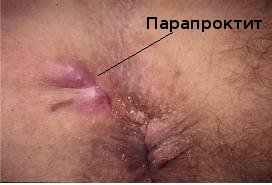
90 A 30-year-old female patient has been delivered to the gynaecological department with complaints of acute pain in the lower abdomen and body temperature 38,8oC. In history: sexual life out of wedlock and two artificial abortions. Gynaecological examination reveals no changes of uterine. The appendages are enlarged and painful on both sides. Vaginal discharges are purulent and profuse. What study is required to confirm a diagnosis?
A. Hysteroscopy
B. Colposcopy
C. Laparoscopy
D. Bacteriological and bacterioscopic analysis*
E. Curettage of uterine cavity
91 350 workers of a metalurgical plant had to undergo a yearly preventive examination. A territorial polyclinic carried out preventive examination of 325 workers. As a result of it, 1 worker was recognized as temporarily disabled, 15 workers underwent further rehabilitation at an after-work sanatorium, 10 workers were provided with diet meal. What index characterizing the preventive work of the polyclinic should be applied in this case?
A. Frequency of case detection during examinations
B. Percentage of people who underwent rehabilitation at an after-work sanatorium
C. Percentage of people who were provided with diet meal
D. Percentage of temporarily disabled people
E. Coverage of preventive medical examinations*

Metalurgical Industry
92 A patient suddenly felt an acute chest pain irradiating to the left arm. Objectively: the patient is excited, with pale skin. Breathing rate – 38/min, AP – 180/110 mm Hg. Later the patient lost consciousness and fell down. Pulse on the great vessels was absent, the pupils were equally dilated. What is the most likely diagnosis?
A. Heart attack
B. Clinical death*
C. Coma
D. Agonal state
E. Disorder of the cerebral circulation
NB!
Clinical Death:
1. Stoppage of heart beat, pulse and breathing is called clinical death.
2. Most organs (eye, kidney) remain alive after clinical death.
3. These organs are used for transplantation.
Biological Death:
1. The death caused by degeneration of tissues in brain and other part is called biological death.
2. Most organs become dead after biological death.
3. These organs can not be used for organ transplantation.
93 A hospital has admitted a 52-year-old patient with disseminated pulmonary tuberculosis, complaints of acute pain in the right half of chest, that developed after going upstairs to the 3rd floor; cough, dyspnea at rest, marked cyanosis. What kind of complication should suspected first of all?
A. Acute myocardial infarction
B. Pleuritis
C. Cardiac failure
D. Pulmonary failure
E. Spontaneous pneumothorax*
NB! Miliary tuberculosis (also known as “disseminated tuberculosis”) is a form of tuberculosis that is characterized by a wide dissemination into the human body and by the tiny size of the lesions (1–5 mm). Its name comes from a distinctive pattern seen on a chest X-ray of many tiny spots distributed throughout the lung fields with the appearance similar to millet seeds—thus the term “miliary” tuberculosis. Miliary TB may infect any number of organs, including the lungs, liver, and spleen. It is a complication of 1–3% of all TB cases.
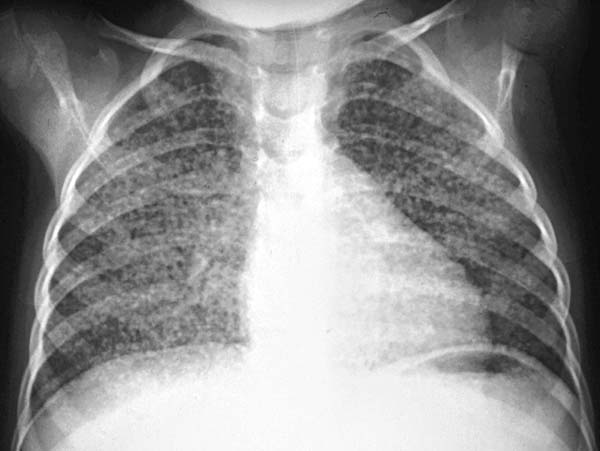
Miliary tuberculosis

Miliary tuberculosis

Spontaneous Tension Pneumothorax

Spontaneous Tension Pneumothorax
94 Environmental pollution is prevented by mechanical separation of nontoxic solid domestic waste. Specify the method which can be used for mechanical utilization of these wastes:
A. Burial of wastes
B. Burning as power-plant fuel
C. Waste neutralization in biothermal boxes
D. Compressing of wastes into building blocks*
E. Hydrolysis
95 On the fifth day after a casual sexual contact a 25-year-old female patient consulted a doctor about purulent discharges from the genital tracts and itch. Vaginal examination showed that vaginal part of uterine cervix was hyperemic and edematic. There was an erosive area around the external orifice of uterus. There were mucopurulent profuse discharges from the cervical canal, uterine body and appendages exhibited no changes. Bacterioscopic examination revealed bean-shaped diplococci that became red after Gram’s staining. What is the most likely diagnosis?
A. Acute gonorrheal endocervicitis*
B. Candidal vulvovaginitis
C. Clamydial endocervicitis
D. Trichomonal colpitis
E. Bacterial vaginism


96 A 62-year-old patient has been delivered to the surgical department with complaints of sudden pain in the umbilical region irradiating to the back and groin, which was accompanied by a syncope. Objectively: the patient is in grave condition, umbilical region is tender on palpation, bowel sounds are diminished. AP drop is present. USI reveals: free fluid in the abdomen, thickening of the wall of the abdominal aorta. The most likely diagnosis is:
A. Rupture of abdominal aortic aneurism*
B. Stomach ulcer perforation
C. Peritonitis
D. Acute appendicitis
E. Acute pancreatitis

97 A 40-year-old patient underwent an operation for a lumbar phlegmon. Body temparature rose again up to 38oC, he got intoxication symptoms, there was an increase of leukocyte number in blood. The wound that was nearly free from necrotic tissues and full of granulations started to discharge pus, the granulations turned pale. What complication dveloped in this patient?
A. Putrid phlegmon
B. Sepsis*
C. Erysipelas
D. Erysipeloid
E. Allergic reaction



98 A farmer hurt his right foot during working in a field and came to the emergency station. He doesn’t remember when he got last vaccination and he has never served in the army. Examination of his right foot revealed a contaminated wound up to 5-6 cm long with uneven edges. The further treatment tactics will be:
A. To make an injection of tetanus anatoxin
B. To administer an antibiotic
C. To make an injection of tetanus anatoxin and antitetanus serum*
D. To make an injection of antitetanus serum
E. Surgical d-bridement only

Rusty nails Can cause Tetanus

Tetanus

Tetanus
99 Working conditions of a building company worker are characterized by cooling microclimate effect, silica-containing dust, caustic alkali (quicklime) and noise. What medical expert should be the chief of the commission that periodically examines the workers of the mentioned category?
A. Neurologist
B. Therapeutist*
C. Otolaryngologist
D. Dermatologist
E. Ophthalmologist
100 A surgeon examined a 42-year-old patient and diagnosed him with right forearm furuncle at the purulo-necrotic stage. The furuncle was lanced. At the hydration stage the wound dressing should enclose the following medication:
A. Vishnevsky ointment
B. Dimexide
C. Hypertonic solution*
D. Chloramine
E. Ichthyol ointment

101 After lifting a load a patient felt undurable pain in the loin. He was diagnosed with acute lumbosacral radiculitis. Which of the following is contraindicated for this patient?
A. Vitamins of B group
B. Intravenous injection of aminophylline
C. Dehydrating drugs
D. Analgetics
E. Warming procedures*
NB! Radicular pain, or radiculitis, is pain “radiated” along the dermatome (sensory distribution) of a nerve due to inflammation or other irritation of the nerve root (radiculopathy) at its connection to the spinal column. A common form of radiculitis is sciatica – radicular pain that radiates along the sciatic nerve from the lower spine to the lower back, gluteal muscles, back of the upper thigh, calf, and foot as often secondary to nerve root irritation from a spinal disc herniation or from osteophytes in the lumbar region of the spine.


Disk Herniation

102 A 49-year-old patient complains of deglutition problems, especially with solid food, hiccups, voice hoarseness, nausea, regurgitation, significant weight loss (15 kg within 2,5 months). Objectively: body weight is reduced. Skin is pale and dry. In lungs: vesicular breathing, heart sounds are loud enough, heart activity is rhythmic. The abdomen is soft, painless on palpation. Liver is not enlarged. What study is required to make a diagnosis?
A. Esophageal duodenoscopy along with biopsy*
B. Study of gastric secretion
C. X-ray in Trendelenburg’s position
D. Clinical blood test
E. X-ray of digestive tract organs


103 A 26-year-old woman complains of having bloody discharges from the genitals for the last 14 days, abdominal pain, general fatiguability, weakness, weight loss, fever, chest pain, obstructed respiration. 5 weeks ago she underwent an induced abortion in the 6-7 week of gestation. Objectively: the patient is pale and inert. Bimanual examination revealed that the uterus was enlarged up to 8-9 weeks of gestation. In blood: Hb – 72 g/l. Urine test for chorionic gonadotropin gave the apparently positive result. What is the most likely diagnosis?
A. Uterine fibromyoma
B. Metroendometritis
C. Uterus perforation
D. Chorioepithelioma*
E. Uterine carcinoma
NB! Chorioepithelioma is a malignant, fast-growing tumor that develops from trophoblastic cells (cells that help an embryo attach to the uterus and help form the placenta). Almost all chorioepitheliomas form in the uterus after fertilization of an egg by a sperm, but a small number form in a testis or an ovary. Chorioepitheliomas spread through the blood to other organs, especially the lungs. They are a type of gestational trophoblastic disease. Also called chorioblastoma, choriocarcinoma, and chorionic carcinoma.
Complete hydatidiform moles (Molar pregnancy) have a higher risk of developing into choriocarcinoma — a malignant tumor of trophoblast cells — than do partial moles.

104 After a 10-year-old child had been bitten by a bee, he was delivered to a hospital. There were lip, face and neck edemata. The patient felt hot and short of breath. Objectively: breathing was laboured and noisy. There were foamy discharges from the mouth, cough. The skin was pale and cold. There was bradypnoea. Heart sounds were muffled and arrhythmic. Thready pulse was present. What diagnosis was made by the expert in resuscitation?
A. Acute cardiovascular collapse
B. Cerebral coma
C. Anaphylactic shock*
D. Quincke’s edema
E. Bronchial asthma

105 After birth a child was pale and had arrhythmical breathing. Oxygen therapy didn’t have any effect. Pulse was weak and rapid. It was difficult to measure arterial pressure accurately. There were no edemata. What is the most likely reason for these symptoms?
A. Congestive heart failure
B. Intracranial haematoma
C. Asphyxia*
D. Congenital pneumonia
E. Intrauterine sepsis
106 A parturient woman is 25 years old, it is her second day of postpartum period. It was her first full-term uncomplicated labour. The lochia should be:
A. Bloody*
B. Purulent
C. Mucous
D. Sanguino-serous
E. Serous
NB ! Lochia is the vaginal discharge for the first fortnight of puerperium (after birth), containing blood, mucus, and placental tissue. Lochia discharge typically continues for 4 to 6 weeks after childbirth.
It is sterile for the first 2-3 days, but not so by the third or fourth day, as the uterus begins to be colonized by vaginal commensals such as non-hemolytic streptococci and E. coli.
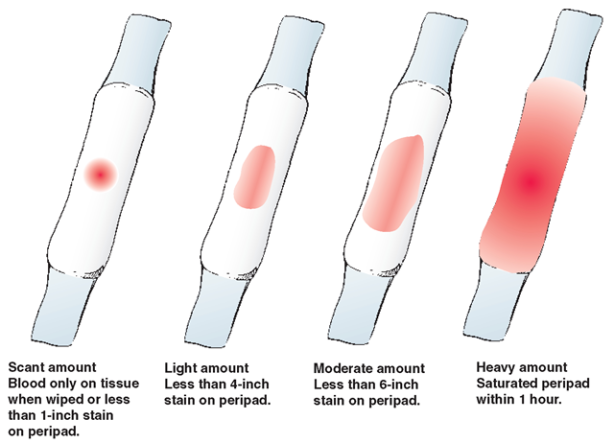
107 A full-term baby (the 1st uncomplicated pregnancy, difficult labour) had a cephalohematoma. On the 2nd day there was jaundice, on the third the following changes in neurological status appeared: nystagmus, Graefe syndrome. Urine was yellow, feces were of golden-yellow colour. Mother’s blood group is A (II) Rh–, the baby’s one – A (II) Rh+. On the third day the child’s Hb was 200g/l, RBCs – 6,1*1012/l, blood bilirubin – 58 micromole/l at the expense of unbound fraction. What caused the jaundice in the child?
A. Fetal hepatitis
B. Neonatal anaemia
C. Biliary atresia
D. Physiological jaundice
E. Craniocerebral birth trauma*

Cephalohematoma
108 A 25-year-old female patient complains about having amenorrhea for 3 years. She associates it with difficult labour complicated by massive hemorrhage. She also complains of loss of weight, hair fragility and loss, lack of appetite and depression. Objective examination reveals no pathological changes of uterus and its appendages. What is the desease pathogenesis?
A. Hypoproduction of progesterone
B. Hyperproduction of androgens
C. Hyperproduction of prolactin
D. Hypoproduction of gonadotropin*
E. Hyperproduction of estrogens
109 On the 1st day of life a full-term girl (2nd labour) weighing 3500g, with Apgar score of 8 points, presented with jaundice. Indirect bilirubin of blood – was 80 micromole/l, 6 hours later – 160 micromole/l. What is the optimal method of treatment?
A. Enterosorbents
B. Exchange blood transfusion*
C. Phenobarbital treatment
D. Phototherapy
E. Infusion therapy
110 A 14-year-old girl complains of pain in vaginal area and lower abdomen that last for 3-4 days and have been observed for 3 months about the same time. Each time pain is getting worse. Objectively: mammary glands are developed, hairiness corresponds to the age. The virginal membrane is intact, cyanotic and protruded. She has never had menstruation. She has been diagnosed with primary amenorrhea. What is the reason of amenorrhea?
A. Turner’s syndrome
B. Sexual development delay
C. Babinski-Frohlich syndrome
D. Pregnancy
E. Hymen atresia*

111 A 42-year-old patient complains of back pain, darkened urine, general weakness, dizziness that occurred after treating a cold with aspirin and ampicillin. Objectively: the patient is pale, with subicteric sclerae. HR – 98 bpm. Liver – +2 cm, spleen – +3 cm. In blood: RBCs – 2,6*1012/l, Hb – 60 g/l, CI – 0,9, WBCs – 9,4*109/l, basophils – 0,5%, eosinophils – 3%, stab neutrophils – 6% segmented neutrophils – 58%, lymphocytes – 25%, monocytes – 7%, ESR – 38 mm/hour, reticulocytes – 24%. Total bilirubin – 38 millimole/l. What complication occurred in the patient?
A. Cholelithiasis
B. Agranulocytosis
C. Paroxysmal nocturnal hemoglobinuria
D. Acquired hemolytic anemia*
E. Toxic hepatitis

112 A child is 1 year old. Ater the recent introduction of complementary feeding the child has presented with loss of appetite, diarrhea with large amounts of feces and occasional vomiting, body temperature is normal. Objectively: body weight is 7 kg, the child is very pale, there are edemata of both legs, abdomen is significantly enlarged. Coprogram shows many fatty acids and soaps. The child has been diagnosed with celiac disease and administered the gluten-free diet. What is to be excluded from the ration?
A. High digestible carbohydrates
B. Milk and dairy products
C. Fruit
D. Cereals – wheat and oats*
E. Animal protein

Celiac disease is an increasingly diagnosed chronic inflammatory disorder of the intestine. Damage to the intestine is due to a specific immune response triggered by certain peptides derived from gluten proteins in wheat, rye and barley, and sometimes oats.
113 15 minutes after the second vaccination with DTP vaccine a 4-month-old boy exhibited the symptoms of Quincke’s edema. What medication should be given for emergency aid?
A. Adrenalin
B. Heparin
C. Seduxen
D. Prednisolone*
E. Furosemide

Quincke’s edema (Angioedema)
114 A 10-year-old boy periodically has short states (up to 10-15 seconds) that can be characterized as a “sudden blackout” and are accompanied by gaze fixation in the upright position, absent-minded and vacant face expression, lack of movements and following amnesia. Specify this state:
A. Thought block
B. Fugue
C. Absence*
D. Trance
E. Obnubilation
115 Examination of the corpse of a man who died from hanging reveals: death spots disappear when pressed upon and restore after 50 seconds, rigor mortis is moderately expressed only in the masticatory muscles as well as neck and finger muscles, body temperature is of 31oC. The time of death:
A. 6-7 hours ago*
B. 10-18 hours ago
C. 16-24 hours ago
D. 1-2 hours ago
E. 8-10 hours ago
116 A 42-year-old woman has had hyperpolymenorrhea and progressing algodismenorrhea for the last 10 years. Gynaecological examination revealed no changes of uterine cervix; discharges are moderate, of chocolate colour, uterus is slightly enlarged and painful, appendages are not palpable, the fornices are deep and painless. What is the most likely diagnosis?
A. Uterine carcinoma
B. Uterine endometriosis*
C. Endomyometritis
D. Subserous uterine fibromyoma
E. Adnexal endmetriosis

117 A municipal hospital reported on the number of operated patients including fatal outcomes following the operations. Which index of hospital work can be calculated on the ground of this data?
A. –
B. Standardized lethality
C. Total lethality
D. Postoperative lethality*
E. Index of late hospitalization since a disease incursion
118 A therapeutist needs to analyze adult health in the area of service. Which groups of indicators will be included into this analysis?
A. Demographic, sickness rates, disability*
B. Demographic, sickness rates, physical development
C. Sickness rates, disability, death rates
D. Birth rates, sickness rates, disability
E. Sickness rates, death rates, physical development
119 A 54-year-old male patient complains of aching pain in the lumbar region, that is getting worse after standing in an upright position, physical exercise, supercooling. The patient also reports of experiencing weakness in the afternoon. Pain in the lumbar region, said about 10 years old. Objectively: pale skin, to– 37,2oC, AP- 180/100 mm Hg, minor costovertebral angle tenderness (Pasternatsky symptom). In blood: RBCs – 3,5*1012/l, WBCs – 6,5*109/l, ESR – 22 mm/h. In urine: the relative density – 1010, leukocytes – 12-15 in the field of vision, erythrocytes – 2-3 in the field of vision. Urine bacterial count – 100000 in 1 ml. What is the most likely diagnosis?
A. Chronic glomerulonephritis
B. Polycystic renal disease
C. Amyloidosis
D. Nephrolithiasis
E. Chronic pyelonephritis*

120 An 8-year-old girl has been admitted to the cardiology department. Objectively: there is a skin lesion over the extensor surfaces of joints with atrophic cicatrices, depigmentation, symmetrical affection of skeletal muscles (weakness, edema, hypotrophy). What disease are these changes most typical for?
A. Reiter’s disease
B. Systemic scleroderma
C. Dermatomyositis*
D. Nodular periarteritis
E. Systemic lupus erythematosus

Dermatomyositis (in Child)
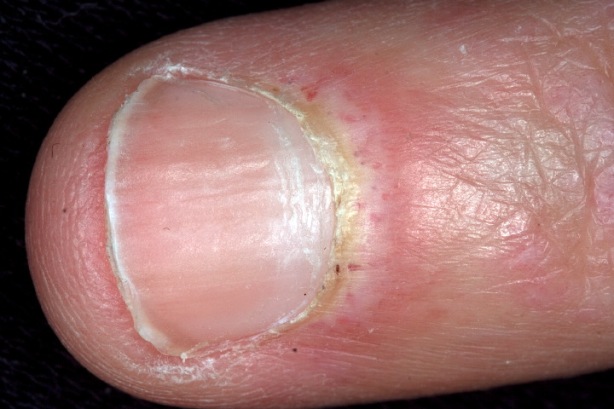
Dermatomyositis at Fingernail
121 14 days ago a 49-year-old patient was operated on for perforated appendicitis and disseminated fibrinopurulent peritonitis. The postoperative period was uneventful. On the 9th day the patient presented with low-grade fever, abdominal pain, frequent liquid stools. USI of the left mesogastrium reveals a fluid formation 9×10 cm large. In blood: leukocytosis with the left shift. What is your provisional diagnosis?
A. Left kidney cyst
B. Interloop abscess*
C. Abdominal cavity tumour
D. Liver abscess
E. Spleen abscess
Interloop abscess = Surgically removed. if the abscess drains and recurs, there is probably some residual bacteria within the wall and interior of the abscess cavity. in that case, it makes sense to completely remove the abscess after the inflammation has calmed down, including the entire wall, to prevent recurrence.
122 A 3-year-old child has been delivered to a hospital in soporose state with considerable amyotonia, inhibition of tendon and periosteal reflexes. Miosis and asthenocoria are also present. Corneal reflexes are preserved. Pulse is rapid and weak. AP- 80/50 mm Hg. The parents suspect the child of accidental taking some tablets. Such clinical presentations are typical for intoxication with the following tableted drugs:
A. Barbiturates
B. Antihypertensive drugs
C. Beta-2-adrenoceptor agonists
D. Antropine drugs
E. Tranquilizers*

123 Topographic percussion of lungs in a patient who got a serious job-related barotrauma revealed that the lower lungs borders were located one rib below normal, there was a significant increase in both lungs height and Kronig’s isthmus. What disease should be suspected in the first place?
A. Bronchial asthma
B. Chronic bronchitis
C. Pneumothorax
D. Exudative pleuritis
E. Pulmonary emphysema*
Kronig’s Isthmus = The narrow straplike portion of the resonant field that extends over the shoulder, connecting the larger areas of resonance over the pulmonary apex in front and behind.


Signs of hyperinflation can be seen in emphysema, chronic bronchitis and asthma. We can call it emphysema only when hyperinflation is associated with blebs and paucity of vascular markings in the outer third of the film.
124 A 69-year-old female patient complains of temperature rise up to 38,3oC, haematuria. ESR – 55 mm/h. Antibacterial therapy turned out to be ineffective. What diagnosis might be suspected?
A. Urolithiasis
B. Chronic glomerulonephritis
C. Renal amyloidosis
D. Renal cancer*
E. Polycystic renal disease
125 A 62-year-old male has been hospitalized in the intensive care unit with a continuous attack of retrosternal pain that cannot be relieved by nitroglycerin. Objectively: AP- 80/60 mm Hg, heart rate – 106/min, breathing rate – 22/min. Heart sounds are muffled, a gallop rhythm is present. How would you explain the AP drop?
A. Reduction in peripheral resistance
B. Internal haemorrhage
C. Reduction in cardiac output*
D. Blood depositing in the abdominal cavity
E. Adrenergic receptor block
126 As a result of lifting a load a 62-year-old female felt acute pain in the lumbar region, in a buttock, posterolateral surface of her right thigh, external surface of the right shin and dorsal surface of foot. Objectively: weakness of the anterior tibial muscle, long extensor muscle of the right toes, short extensor muscle of the right toes. Low Achilles reflex on the right. Positive Lasegue’s sign. What examination method would be the most effective for specification of the diagnosis of discogenic compression of L5 root?
A. Magnetic resonance scan*
B. Spinal column X-ray
C. Angiography
D. Electromyography
E. Lumbar puncture
127 A children’s surgical unit admitted a 1-month-old boy who had been prenatally diagnosed with the left-sided pyelectasis. Such studies as drip infusion urography, cystography and USI allowed to reveal initial hydronephrosis. There is no information confirming the secondary pyelonephritis. What tactics of this patient management is most advisable?
A. There is no need in further surveillance and treatment
B. Antibacterial therapy
C. Urgent nephrostomy
D. Anderson-Hynes operation
E. 6-month surveillance*
128 A 44-year-old patient has been admitted to a hospital with complaints of dull, aching pain in the left lumbar region, the admixture of pus in the urine. Examination revealed a grade II staghorn calculus on the left. What method of treatment is indicated for this patient?
A. Surgery*
B. Conservative therapy
C. Ascending litholysis
D. Contact lithotripsy
E. Distance lithotripsy
129 A 72-year-old patient complains of pain and bleeding during defecation. Digital rectal investigation revealed a tumour of the anal canal. After verification of the diagnosis the patient was diagnosed with squamous cell carcinoma. The secondary (metastatic) tumour will be most probably found in:
A. Brain
B. Liver
C. Mediastinum
D. Pelvic bones
E. Lungs*
130 A welder at work got the first-degree burns of the middle third of his right shin. 5 days later the skin around the burn became edematic and itchy. Objectively: on a background of a well-defined erythema there is polymorphic rash in form of papules, vesicles, pustules, erosions with serous discharge. What is the most likely diagnosis?
A. Streptococcal impetigo
B. True eczema
C. Toxicoderma
D. Occupational eczema
E. Microbal eczema*
131 An emergency team deliverd a 83-year-old patient complaining of inability of her right leg to support the body after falling on her right side. Objectively: the patient lies on a gurney, her right leg is rotated outwards, the outside edge of foot touches the bed. There is positive straight leg raising sign. What is your provisional diagnosis?
A. Hip joint contusion
B. Femoral diaphysis fracture
C. Hip dislocation
D. Cotyloid cavity fracture
E. Femoral neck fracture*
132 After contusion of the right eye a patient complains of sudden loss of vision with remaining light perception. Objectively: the eye is not irritated. The cornea is transparent. Pupil reacts to light. The pupil area is black. The fundus reflex is absent. What is the most likely cause of vision loss?
A. Acute occlusion of retinal vessels
B. Traumatic cataract
C. Optic nerve avulsion
D. Retinal detachment
E. Hemophthalmia*
133 A patient has an over a year-old history of fast progressive rheumatoid arthritis. X-raying confirms presence of marginal erosions. What basic drug would be the most appropriate in this case?
A. Chloroquine
B. Prednisolone
C. Diclofenac sodium
D. Aspirin
E. Methotrexate*
134 At first appointment with an obstetrician-gynaecologist a pregnant woman is referred to other medical specialists. She must be obligatory examined by the following specialists:
A. Therapeutist and endocrinologist
B. ENT and ophthalmologist
C. Therapeutist and dentist*
D. Dentist and phthisiatrician
E. Dentist and cardiologist
135 A 27-year-old patient complains of nasal haemorrhages, multiple bruises on the anterior surface of the trunk and extremities, sudden weakness. In blood: Hb- 74 g/l, reticulocytes – 16%, RBCs – 2,5*1012/l, platelets – 30*109/l, ESR- 25 mm/h. What is the most effective measure for the treatment of thrombocytopenia?
A. Splenectomy*
B. Iron preparations
C. Cytostatics
D. Hemotransfusion
E. Vitamin B12
136 A 47-year-old patient came to see a doctor on the 7th day of disease. The disease developed very fast: after the chill body temperature rose to 40oC and lasted up to 7 hours, then dropped abruptly, which caused profuse sweat. There were three such attacks occuringonce in two days. Two days ago the patient arrived from Africa. Objectively: pale skin, subicteric sclera, significantly enlarged liver and spleen. What is the cause of fever attacks in this disease?
A. Exotoxin of a causative agent
B. Endotoxin of a causative agent
C. Tissue schizogony
D. Erythrocytic schizogony*
E. Gametocytes
137 According to the report of water quality control, drinking city water has the following characteristics: turbidity – 1,5 mg/m3, odour – 3 points, metallic taste – 2 points, pale yellow colour, colour index – 20o, temperature – 12o. Which of these factors doesn’t comply with hygienic requirements?
A. Taste
B. Turbidity
C. Odour*
D. Colour index
E. Temperature
138 Half an hour after a 30-year-old woman had had some custard cake, she experienced lancinating abdominal pain, nausea, vomiting. Objectively: body temperature – 36,0oC, pale skin, breathing rate – 20/min, Ps- 100/min. AP- 95/65 mm Hg, loud cardiac sounds. Dry tongue. Abdomen was painful in its epigastrial part, there were no signs of peritoneum irritation. What is the first measure to be taken?
A. Injection of Cerucal
B. Antibiotic therapy
C. Intravenous rehydratation
D. Administration of an enterosorbent
E. Gastric lavage*
139 A patient has a stab wound on his right foot. On the fourth day after injury the patient’s body temperature rose up to 38oC, inguinal lymph nodes became enlarged and painful, skin over them reddened. What complication might be suspected?
A. Lymphangitis
B. Phlegmon
C. Tetanus
D. Erysipelas
E. Lymphadenitis*
140 A teacher of a secondary school was diagnosed with pulmonary tuberculosis. What is the maximum duration of his medical certificate?
A. Four months
B. Two months
C. Ten months*
D. A month
E. Five months
141 A 39-year-old patient complains of a tumour on the anterior surface of her neck. The tumour has been observed for 2 years. It is nonmobile and has enlarged recently. The patient has a changed tone of voice, a sense of pressure. Objectively: in the left lobe of the thyroid gland a 3 cm node is palpable; it is very dense, tuberous, painless. Cervical lymph nodes are enlarged. Functional status of the thyroid gland is unchanged. What is the most likely diagnosis?
A. Thyroid gland cancer*
B. Nodular euthyroid goiter
C. Nodular hyperthyroid goiter
D. Chronic fibrous Riedel’s thyroiditis
E. Chronic lymphomatous Hashimoto’s thyroiditis
142 A child is 2 years old. The child complains of hoarse voice, dyspnea with obstructed inspiration. The disease started 3 days ago from dry cough and nose stuffiness. Objectively: general condition is unbalanced, stridor is present. The child’s skin is pale. Body temperature is 37,7oC. The palatine arches are hyperemic. There is no deposit. Heart sounds are rhythmic. Auscultation of lungs reveals rough breathing sounds, crepitation is absent. Parainfluenza virus has been detected in nasopharynx lavage. What is the most likely diagnosis?
A. Epiglottitis
B. Foreign body
C. Acute laryngotracheitis*
D. Laryngospasm
E. Diphtheria
143 A 58-year-old patient complains of a headache in the occipital region, nausea, choking, opplotentes. The presentations appeared after a physical exertion. Objectively: the patient is excited. Face is hyperemic. Skin is pale. Heart sounds are regular, the 2nd aortic sound is accentuated. AP- 240/120 mm Hg, HR- 92/min. Auscultation reveals some fine moisr rales in the lower parts of the lungs. Liver is not enlarged. ECG shows signs of hypertrophy and left ventricular overload. What is the most likely diagnosis?
A. Uncomplicated hypertensic crisis
B. Community-acquired pneumonia
C. Bronchial asthma exacerbation
D. Acute myocardial infarction, pulmonary edema
E. Complicated hypertensic crisis*
144 A 28-year-old woman has a 12-year history of chronic glomerulonephritis with latent course. Over the past six months she has developed general weakness, loss of appetite, low work performance, nausea. The patient complains of headache, pain in the joints. On examination: anemia, blood urea – 34,5 millimole/l, blood creatinine – 0,766 millimole/l, hyperkalemia. What complication has developed?
A. Chronic renal insufficiency*
B. Acute renal insufficiency
C. Nephrotic syndrome
D. Renal amyloidosis
E. Pyelonephritis
145 A 43-year-old patient had been admitted to a hospital with clinical presentations of ischiorectal periproctitis. On the 12th day of treatment the patient’s condition deteriorated: there was an increase in the rate of intoxication and hepatic failure, the body temperature became hectic, AP was 100/60 mm Hg. USI of liver revealed a hydrophilic formation. In blood: WBCs – 19,6*109/l, RBCs.- 3,0*1012/l, Hb- 98 g/l. What complication was developed?
A. Liver abscess*
B. Pylephlebitis
C. Hepatic cyst
D. Budd-Chiari syndrome
E. Liver necrosis
146 Examination of a 9-month-old girl revealed skin pallor, cyanosis during excitement. Percussion revealed transverse dilatation of cardiac borders. Auscultation revealed continuous systolic murmur to the left of the breastbone in the 3-4 intercostal space. This murmur is conducted above the whole cardiac region to the back. What congenital cardiac pathology can be suspected?
A. Defect of interatrial septum
B. Pulmonary artery stenosis
C. Coarctation of aorta
D. Defect of interventricular septum*
E. Fallot’s tetrad
147 An 8-month-old baby has had problems with nasal breathing and muco-purulent discharge from the nose for a week. Examination reveals a rhinedema, muco-purulent discharges from the middle nasal meatus as well as on the back of pharynx. What disease are these symptoms most typical for?
A. Hemisinusitis
B. Sphenoiditis
C. Ethmoiditis*
D. Maxillary sinusitis
E. Frontitis
148 A 22-year-old female patient complains of dull pain in her right iliac area that she has been experiencing for a week, morning sickness and gustatory change. She has a histrory of menstruation delay for 3 weeks. Objectively: AP- 80/50 mm Hg, pulse is 78 bpm, body temperature is 37oC. Bimanual examination reveals that uterus is enlarged, soft, mobile and painless. Uterine appendages are palpable on the right, there is a dense, elastic and moderately painful formation 3×4 cm large. What is the most likely diagnosis?
A. Uterogestation
B. Interrupted fallopian pregnancy
C. Acute appendicitis
D. Progressing fallopian pregnancy*
E. Right ovarian cyst
149 2 days ago a patient presented with acute pain in the left half of chest, general weakness, fever and headache. Objectively: between the 4 and 5 rib on the left the skin is erythematous, there are multiple groups of vesicles 2-4 mm in diameter filled with transparent liquid. What diease are these symptoms typical for?
A. Herpes zoster*
B. Herpetiform Duhring’s dermatosis
C. Pemphigus
D. Streptococcal impetigo
E. Herpes simplex
150 A 62-year-old patient complaining of enlargement of cervical, supraclavicular and axillary lymph nodes, subfebrile temperature for the last 3 months has been admitted to a hospital. In blood: WBCs – 64109/l, lymphocytes – 72%. What method of study should be used to specify the diagnosis?
A. Thermography
B. Lymphoscintigraphy
C. Myelogram*
D. Lymphography
E. X-rays
151 A patient is 30 years old, works as a carpenter. Six months ago there appeared some behavioural changes: he got interested in philosophy, began writing a treatise on the purpose of his human existence, quitted his job, stopped caring about his children, went out carelessly dressed, heard “voices in his head” that guided his behaviour. The patient claimed sure that he was an Ambassador of God on Earth and was constantly feeling His influence. He is not critical about his disease. What diagnosis can be assumed?
A. Alcocholic psychosis
B. Reactive psychosis
C. Organic psychosis
D. Schizophrenia*
E. Somatogenic psychosis
152 Examination of a 38-year-old patient who had been hit with a blunt object on the left side of chest revealed a fracture of the X rib with fragments displacement, parietal pneumothorax. The patient complains of pain in the left subcostal area. Objectively: the patient is pale, AP- 80/40 mm Hg, Ps- 138/min, of poor volume. USI reveals fluid in the left abdomen. Splenic rupture is present. What treatment tactics should be chosen?
A. Anti-schock actions and laparotomy following the arterial pressure rise
B. Drainage of the left pleural cavity and laparotomy*
C. Left-sided thoracotomy and immediately following laparotomy
D. Immediate laparotomy and alcohol-novocaine block of the X rib
E. Immediate upper middle laparotomy and following drainage of the left pleural cavity
153 A 3-year-old girl presents with pertussis-like cough with thick sputum. There have been persistent changes in lungs since the age of 6 months when she was first diagnosed with acute pneumonia. Chloride concentration in the perspiration is 112 mEq/l. The child has been diagnosed with mucoviscidosis. What is the basis for autosomal recessive disease – mucoviscidosis?
A. Inadequate transport of sodium and chloride ions*
B. Deposition of calcium triphosphates and carbotates in the alveoles
C. Pulmonary cysts
D. a1-antitrypsin deficiency
E. Pulmonary artery hypoplasia
154 A 47-year-old woman underwent a thyroid gland resection on ccount of nodular euthyroid goiter. What preparations are most likely to prevent the disease recurrence?
A. Thyroid hormones*
B. Antistruminum (potassium iodide)
C. Mercazolil
D. Thyrotropin
E. Radioactive iodine
155 After a car accident a 37-year-old patient has an acute pain and bleeding in the middle third of his right thigh. Objectively: there is a wound on the anterior surface of the right thigh with massive bleeding, abnormal mobility at the level of the middle third of the thigh. The first aid is to be started with:
A. Injection of pain-killers
B. Immobilization of the extremity with a transportation splint
C. Digital occlusion of the femoral artery*
D. Venipuncture and intravenous infusion of polyglycine
E. Tourniquet application
156 A 28-years-old woman complains of nausea and vomiting about 10 times per day. She has been found to have body weight loss and xerodermia. The pulse is 100 bpm. Body temperature is 37,2oC. Diuresis is low. USI shows 5-6 weeks of pregnancy. What is the most likely diagnosis?
A. Premature abortion
B. I degree preeclampsia
C. Food poisoning
D. Moderate vomiting of pregnancy*
E. Mild vomiting of pregnancy
157 Development of chronic venous insufficiency of lower extremities depends on the functional condition of so-called musculovenous pump. This term refers to the following group of muscles:
A. Foot muscles
B. Abdominal wall muscles
C. Thigh muscles
D. Shin muscles*
E. Buttock region muscles
158 On the 2 nd day of illness a 27-year-old patient complains of the unbearable headache, repeated vomiting. Objectively: the patient is in a grave condition. He is conscious but adynamic. Lies in a forced position with his head thrown back. There is no skin rash. Occipital muscles are evidently rigid, there are Kernig’s and Brudzinski’s signs. to– 39,5oC, Ps- 120/min., AP- 130/80 mm Hg. What is the reason for the leading syndrome of this disease?
A. Liquor hypotension
B. Liquor hypertension*
C. Hyperthermy
D. Haemorrhages into the adrenal glands
E. Affection of the cranial nerve nuclei
159 A full-term baby was born with body weight of 3200 g, body length of 50 cm, Apgar score – 8-10 points. What is the optimum time for the first breast-feeding?
A. First 48 hours
B. First 6 hours
C. First 24 hours
D. After 48 hours
E. First 30 minutes*
160 A 40-year-old female patient complain of headache, dizziness, muscle weakness, sometimes – cramps in the extremities. She has been taking antihypertensive medications for 10 years. AP- 180/100 mm Hg. Blood potassium – 1,8 millimole/l, sodium – 4,8 millimole/l. In urine: alkaline reaction, the relative density – 1012, protein and sugar are not found, WBCs – 3-4 in the field of vision, RBCs – 1-2 in the field of vision. Conn’s syndrome is suspected. Which drug should be chosen for the treatment of arterial hypertension?
A. Propanolol
B. Hydrochlorothiazide
C. Clonidine
D. Enalapril
E. Spironolactone*
161 Condition of a patient with purulent otitis has abruptly deteriorated: he presents with headache, vomiting, febrile temperature, general hyperesthesia. There are meningeal signs, papilledemas. Focal symptoms are absent. Cerebrospinal fluid is turbid, pressure is high, there is albuminocytologic dissociation with neutrophil predominance. What disease can be suspected?
A. Secondary purulent meningitis*
B. Meningoencephalitis
C. Serous meningitis
D. Subarachnoid haemorrhage
E. Primary purulent meningitis
162 On the 6th day of life a child got multiple vesicles filled with seropurulent fluid in the region of occiput, neck and buttocks. General condition of the child is normal. What disease should be suspected?
A. Miliaria
B. Vesiculopustulosis*
C. Impetigo neonatorum
D. Epidermolysis bullosa
E. Impetigo
163 A secundipara has regular birth activity. Three years ago she had cesarean section for the reason of acute intrauterine hypoxia. During parodynia she complains of extended pain in the area of postsurgical scar. Objectively: fetus pulse is rhythmic – 140 bpm. Vaginal examination shows 5 cm cervical dilatation. Fetal bladder is intact. What is the tactics of choice?
A. Waiting tactics of labor management
B. Cesarean section*
C. Vaginal delivery
D. Augmentation of labour
E. Obstetrical forceps
164 A 43-year-old female patiet complains of eruption on her right leg skin, pain, weakness, body temperature rise up to 38oC. The disease is acute. Objectively: there is an edema on the right leg skin in the region of foot, a well-defined bright red spot in form of flame tips which feels hot. There are isolated vesicles in focus. What is your provisional diagnosis?
A. Haemorrhagic vasculitis
B. Erysipelas*
C. Toxicoderma
D. Contact dermatitis
E. Microbial eczema
165 A 56-year-old patient with diffuse toxic goiter has ciliary arrhythmia with pulse rate of 110 bpm, arterial hypertension, AP- 165/90 mm Hg. What preparation should be administered along with mercazolil?
A. Verapamil
B. Procaine hydrochloride
C. Propranolol*
D. Corinfar
E. Radioactive iodine
166 A hospital admitted a patient with coarse breathing (obstructed inspiration), skin cyanosis, tachycardia and arterial hypertension. He has a histrory of bronchial asthma. An hour ago he was having salbutamol inhalation and forgot to remove a cap that was aspired while taking a deep breath. What measures should the doctor take?
A. Perform conicotomy immediately
B. Make a subcutaneous injection of dexamethasone
C. Perform the Heimlich manoever*
D. Send for an anesthesiologist and wait for him
E. Use an inhalation of b2-adrenoceptor agonist
167 Forensic medical expertise of corpse of a newborn revealed: body weight 3500 g, body length 50 cm, the umbilical cord was smooth, moist, glossy, without any signs of drying. Hydrostatic tests were positive. The test results are the evidence of:
A. Stillbirth
B. Live birth*
C. Hyaline membrane disease
D. Primary atelectasis
E. Secondary atelectasis
168 After an accident a patient complains of pain in the hip joint. Objectively: the leg is in the position of flexion, adduction and internal rotation, significantly contracted. There is elastic resistance to passive adduction or abduction of the extremity. Major trochanter is located high above the Roser-Nelaton line. A significant lordosis is present. What is your provisional diagnosis?
A. Femoral neck fracture with a displacement
B. Iliac dislocation of hip*
C. Pertrochanteric fracture of hip
D. Inferoposterior dislocation of hip
E. Cotyloid cavity fracture with a central dislocation of hip
169 A 6-year-old girl drank some coloured fizzy drink which gave her a feeling of pressure in the throat. 30 minutes later the child’s lips got swollen, then edema gradually spread over the whole face, laryngeal breathing became difficult. The child is excited. Ps- 120/min, breathing rate – 28/min, breathing is noisy, indrawing of intercostal spaces is observed. What basic aid is most appropriate for the restoration of laryngeal breathing?
A. Conicotomy
B. Sedative drugs
C. Tracheostomy
D. Corticosteroids*
E. Antibacterial drugs
170 A 30-year-old male patient consulted a family doctor 2 months after he had been operated for an open fracture of brachial bone. Objectively: the patient’s condition is satisfactory, in the region of the operative wound there is a fistula with some purulent discharge, redness, fluctuation. X-ray picture shows brachial bone destruction with sequestra. What complication arose in the postoperative period?
A. Suture sinus
B. Hematogenic osteomyelitis
C. Posttraumatic osteomyelitis*
D. Wound abscess
E. Posttraumatic phlegmon
171 A 35-year-old patient has been in the intensive care unit for acute renal failure due to crush for 4 days. Objectively: the patient is inadequate. Breathing rate – 32/min. Over the last 3 hours individual moist rales can be auscultated in lungs. ECG shows high T waves, right ventricular extrasystoles. CVP – 159 mm Hg. In blood: the residual nitrogen – 62 millimole/l, K+– 7,1 millimole/l, Cl–– 78 millimole/l, Na+– 120 millimole/l, Ht – 0,32, Hb – 100 g/l, blood creatinine – 0,9 millimole/l. The most appropriate method of treatment would be:
A. Plasma sorption
B. Hemodialysis*
C. Ultrafiltration
D. Plasma filtration
E. Hemosorption
172 A 46-year-old patient complains of sudden palpitation, which is accompanied by pulsation in the neck and head, fear, nausea. The palpitation lasts for 15-20 minutes and is over after straining when holding her breath. What kind of cardiac disorder may be suspected?
A. An attack of atrial flutter
B. An attack of ciliary arrhythmia
C. An attack of ventricular paroxysmal tachycardia
D. An attack of supraventricular paroxysmal tachycardia*
E. An attack of extrasystolic arrhythmia
173 A 32-year-old patient has a 3-year history of asthma attacks, that can be hardly stopped with berotec. Over a few last months he has experienced pain in the joints and sensitivity disorder of legs and feet skin. Ps – 80/min, AP – 210/100 mm Hg. In blood: eosinophilia at the rate of 15%. What disease can be suspected in this case?
A. Periarteritis nodosa*
B. Wegener’s disease
C. Dermatomyositis
D. Systemic lupus erythematosus
E. Systemic scleroderma
174 A 3-year-old child was playing in a playpen when he suddenly developed paroxysmal cough and shortness of breath. Objectively: dry cough, mixed dyspnea. Lung auscultation revealed some wheezes. Breathing sounds on the right are diminished. The child doesn’t mix with other children. Immunization is age-appropriate. What pathological condition can be suspected?
A. Foreign body in the respiratory tracts*
B. Pneumonia
C. Bronchial asthma
D. Pertussis
E. Acute respiratory viral infection
175 Bacterial analysis of air in a living space in winter period by means of Krotov’s apparatus revealed that total number of microorganisms in 1m3 of air was 7200. What is the permissible number of microorganisms for the air to be characterized as “pure”?
A. Up to 3500
B. Up to 5500
C. Up to 2500
D. Up to 7500
E. Up to 4500*
176 A 24-year-old female patient complains of acute pain in the lower abdomen that turned up after a physical stress. She presents with nausea, vomiting, dry mouth and body temperature 36,6oC. She has a right ovarian cyst in history. Bimanual examination reveals that uterus is dense, painless, of normal size. The left fornix is deep, uterine appendages aren’t palpable, the right fornix is contracted. There is a painful formation on the right of uterus. It’s round, elastic and mobile. It is 7х8 cm large. In blood: leukocytosis with the left shit. What is the most likely diagnosis?
A. Ovarian cyst with pedicle torsion*
B. Acute metritis
C. Extrauterine pregnancy
D. Subserous fibromyoma of uterus
E. Right-sided pyosalpinx
177 A 10-year-old child has been folowed-up for the dilated cardiomyopathy. The child presents with dyspnea, cardialgia. There are dense, nonmobile edemata on the lower extremities and sacrum. Ps- 120/min. The cardiac borders are extended transversely. Heart sounds are muffled, there is blowing systolic murmur at the apex and over the xiphoid process. Liver is 3 cm enlarged, urine output is reduced. The blood total protein – 58.6 g/l. In urine: protein – 0,025 g/l, WBCs – 2-4 in the field of vision, RBCs – 2-3 in the field of vision. What is the main mechanism of edema syndrome development:
A. Venous congestion of lesser circulation
B. Venous congestion of greater circulation*
C. Hypoproteinemia
D. Peripheral circulation disorder
E. Secondary nephropathy development
178 A 25-year-old victim of a road accient complains of chest pain, dyspnea. Objectively: the patient is in a grave condition, Ps- 120/min, AP- 90/70 mm Hg.There is pathological mobility of fragments of III-V ribs on the right. Percussion reveals a box sound over the right lung, breathing sounds cannot be auscultated on the right. What examination should be administered in the first place?
A. Pleural puncture
B. X-ray of chest organs*
C. USI of chest organs
D. Bronchoscopy
E. Thoracoscopy
179 A 19-year-old student has been hospitalized on an emergency basis because of severe dyspnea, pain in the left side of chest. The patient got sick 3 days ago. Objectively: body temperature – 38,8oC. BH – 42/min., hypopnoe. There is dullness of percussion sound on the right of the scapula middle, breathing sounds cannot be auscultated. The left border of heart is displaced outwards by 3 cm. Embryocardia is preent, HR – 110/min. The right hypochondrium is painful on palpation. What are the immediate treatment measures in this situation?
A. Urgent puncture of pleural cavity*
B. Administartion of antibiotics of penicillin group
C. Injection of cardiac glycosides
D. Injection of lasix
E. Transfer of the patient to the thoracic surgery department
180 A 30-year-old man was injured in a fire and got thermic burns of III-A and III-B degree that affected 20% of the total skin. AP – 110/70 mm Hg, heart rate -120/min. What transfusion means should be used for blind infusion before transportation?
A. Albumin
B. 10% glucose solution
C. Saline solutions*
D. Fresh frozen plasma
E. Polyglycine
181 After treating a field with pesticides a machine operator presents with great weakness, headache, nausea, vomiting, diarrhea, visual impairment, watery eyes. Objectively: the patient is excited, hypersalivation, hyperhidrosis, muscle fibrillation of tongue and eyelids are oberved. Pupils are narrowed, there is tachycardia, lung auscultation reveals moist small and medium bubbling rales. In blood: changed level of cholinesterase activity. What is the most likely diagnosis?
A. Intoxication with organomercurial pesticides
B. Intoxication with carbamic acid derivatives
C. Intoxication with arsenic-containing pesticides
D. Intoxication with organochlorine pesticides
E. Intoxication with organophosphorous pesticides*
182 A 3-year-old child has been diagnosed with type I diabetes mellitus, hyperosmolar coma. The laboratory confirmed the diagnosis. Which laboratory findings are characteristic for such condition?
A. Hyperglycemia and high indicators of acid-base balance
B. High hyperglycemia without ketonemia*
C. Hyperglycemia and ketonemia
D. Hyperglycemia and ketonuria
E. Hyperglycemia and glucosuria
183 A 44-year-old patient complains about difficult urination, sensation of incomplete urinary bladder emptying. Sonographic examination of the urinary bladder near the urethra entrance revealed an oval well-defined hyperechogenic formation 2×3 cm large that was changing its position during the examination. What conclusion can be made?
A. Prostate adenoma
B. Urinary bladder polyp
C. Primary ureter tumour
D. Malignant tumour of the urinary bladder
E. Concrement*
184 A 54-year-old female patient consulted a doctor about bloody discharges from the genital tracts after 2 years of amenorrhea. USI and bimanual examination revealed no genital pathology. What is the tactics of choice?
A. Contracting drugs
B. Estrogenic haemostasia
C. Styptic drugs
D. Fractional biopsy of lining of uterus and uterine mucous membranes*
E. Hysterectomy
185 A department chief of an in-patient hospital is going to inspect resident doctors as to observation of medical-technological standards of patient service. What documentation should be checked for this purpose?
A. Treatment sheets
B. Registry of operative interventions
C. Statistic cards of discharged patients
D. Annual report of a patient care institution
E. Health cards of in-patients*
186 A 5-year-old child developed an acute disease starting from body temperature rise up to 38,5oC, running nose, cough and conjunctivitis. On the 4th day the child presented with maculo-papular rash on face. Body temparature rose again up to 39,2oC. Over the next few days the rash spread over the whole body and extremities. Mucous membrane of palate was hyperemic, there was whitish deposition on cheek mucous membrane next to molars. What is your provisional diagnosis?
A. Rubella
B. Acute viral respiratory infection
C. Measles*
D. Yersinia
E. Enterovirus diseases
187 A 56-year-old scientist experiences constricting retrosternal pain several times a day while walking for 100-150 m. The pain lasts for up to 10 minutes and can be relieved by nitroglycerine. Objectively: the patient is overweight, heart borders exhibit no abnormalities, heart sounds are rhythmic, Ps- 78 bpm, AP- 130/80 mm Hg. ECG contains low amplitude of T wave in V4-5. What disease might be suspected?
A. Stable FC I stenocardia
B. Instable stenocardia
C. Stable FC IV stenocardia
D. Stable FC III stenocardia*
E. Stable FC II stenocardia
188 In the current year general practitioners of the municipal polyclinic have referred 11 patients with coronary artery disease to the in-patient hospital. In 3 cases the diagnosis wasn’t confirmed. What managerial decision shoud be made in such case?
A. Analysis of each case of diagnostic divergence*
B. Analysis of material and technical basisof the polyclinic
C. Analysis of medical check-up quality
D. Analysis of doctors’ skill level
E. Analysis of diagnostic examination quality
189 A 35-year-old patient has been admitted to a hospital for pain in the left sternoclavicular and knee joints, lumbar area. The disease has an acute character and is accompanied by fever up to 38oC. Objectively: the left sternoclavicular and knee joints are swollen and painful. In blood: WBCs – 9,5*109/l, ESR – 40 mm/h, CRP – 1,5 millimole/l, fibrinogen – 4,8 g/l, uric acid – 0,28 millimole/l. Examination of the urethra scrapings reveals chlamydia. What is the most likely diagnosis?
A. Rheumatic arthritis
B. Gout
C. Reiter’s syndrome*
D. Rheumatoid arthritis
E. Bechterew’s disease
190 A 32-year-old patient lives in an area endemic for echinococcosis. In the last 6 months he reports of pain in the right subcostal area, fever. He is suspected to have liver echinococcosis. What study would be the most informative in this case?
A. Angiography
B. USI*
C. Biochemical laboratory examination
D. Liver scanning
E. Survey radiography of abdominal cavity
191 A 48-year-old patient got a job-related injury of a hypodermic varicose vein on his shin that was accompanied by the intensive phleborrhagia. Choose the optimal variant of first aid:
A. Pressure bandage and limb strapping*
B. Maximal limb flexion in knee joint
C. Occlusion of femoral artery in a typical place
D. Application of Esmarch’s tourniquet beneath the injury
E. Application of Esmarch’s tourniquet above the injury
192 As a result of prolonged exposure to the sun a 20-year-old patient has developed low-grade fever, pain and swelling in the knee and ankle joints, erythema on her face and nose bridge, leukopenia and accelerated ESR. She has been provisionally diagnosed with systemic lupus erythematosus. What pathognomonic laboratory data may confirm this diagnosis?
A. Lymphocytosis
B. Antinuclear factor*
C. Accelerated ESR
D. C-reactive protein
E. Anaemia
193 A full-term infant is 3 days old. On the different parts of skin there are erythemas, erosive spots, cracks, areas of epidermis peeling. The infant has scalded skin syndrome. Nikolsky’s symptom is positive. General condition of the infant is grave. Anxiety, hyperesthesia, febrile temperature are evident. What is the most probable diagnosis?
A. Phlegmon of newborn
B. Impetigo neonatorum
C. Finger’s pseudofurunculosis
D. Mycotic erythema
E. Exfoliative dermatitis*
194 A 40-year-old female patient has a history of rheumatism. She complains about acute pain in her left eye, especially at night, vision impairment, photophobia, lacrimation. The patient cannot suggest any reasons for the disease. Objectively: weak pericorneal injection, flattening of iris relief, iris discoloration. What is the most likely diagnosis?
A. Iridocyclitis*
B. Iritis
C. Keratitis
D. Choroiditis
E. Acute attack of glaucoma
195 A patient with bilateral hydrothorax has repeatedly undergone pleural puncture on both sides. After a regular puncture the patient’s condition has become worse: he presents with fever, chest pain. The next day, the attending physician performing pleural puncture revealed some pus on the right. What is the mechanism of acute right-sided empyema development?
A. Aerial
B. Lymphogenous
C. Hematogenous
D. Implantation
E. Contact-and-aspiration*
196 A patient is on the sick leave for 4 months continuously from the date of injury. The treatment is going to last for 1-2 months. Who has the right to extend the duration of medical certificate for this patient?
A. Medical advisory commission after medico-social expert commission examination*
B. Medical advisory commission after inpatient treatment
C. District doctor by agreement with a department chief
D. Medical superintendent
E. Medico-social expert commission
197 A 10-year-old boy underwent treatment in cardiological department for rheumatism, I acute attack of rheumatic fever, active phase, II degree. The patient was discharged in satisfactory condition. Which drug should be chosen for prevention of rheumatism recurrence?
A. Erythromycin
B. Ampicillin
C. Oxacillin
D. Bicillinum-5*
E. Bicillinum-1
198 Educational rooms are illuminated with various lighting fittings. What type of lighting fittings is the most appropriate in respect of hygienic norms?
A. Direct light fittings
B. Semi-reflected light fittings
C. Combined light fittings
D. Ambient light fittings
E. Indirect light fittings*
199 A 54-year-old patient has an over 20-year history of femoral osteomyelitis. Over the last month she has developed progressing edemata of the lower extremities. Urine test reveals: proteinuria at the rate of 6,6 g/l; in blood: dysproteinemia in form of hypoalbuminemia, increase in a2– and g-globulin rate, ESR – 50 mm/h. What is the most likely diagnosis?
A. Systemic lupus erythematosus
B. Acute glomerulonephritis
C. Secondary renal amyloidosis*
D. Chronic glomerulonephritis
E. Myelomatosis
200 A 36-year-old patient complains of skin rash that appeared a week ago and doesn’t cause any subjective problems. Objectively: palm and sole skin is covered with multiple lenticular disseminated papules not raised above the skin level. The papules are reddish, dense on palpation and covered with keratinous squamae. What is the provisional diagnosis?
A. Palm and sole callosity
B. Palmoplanar psoriasis
C. Secondary syphilis *
D. Palmoplanar rubrophytosis
E. Verrucosis


